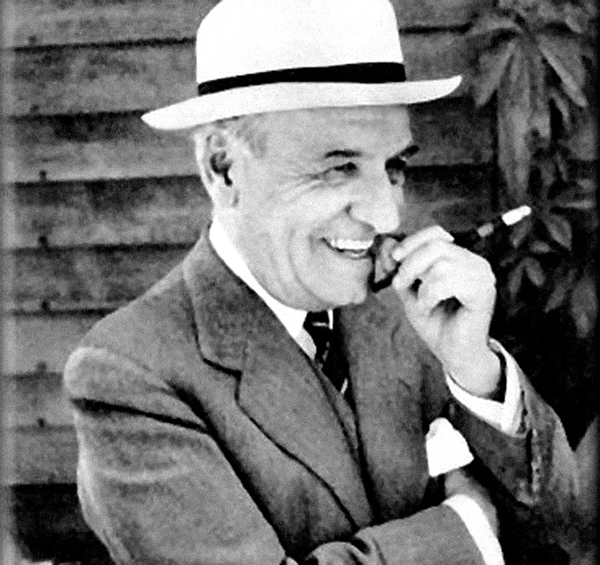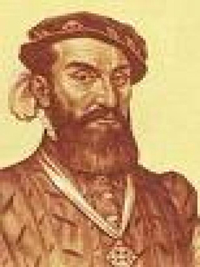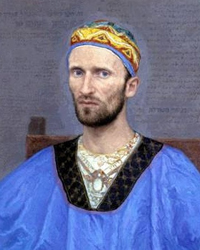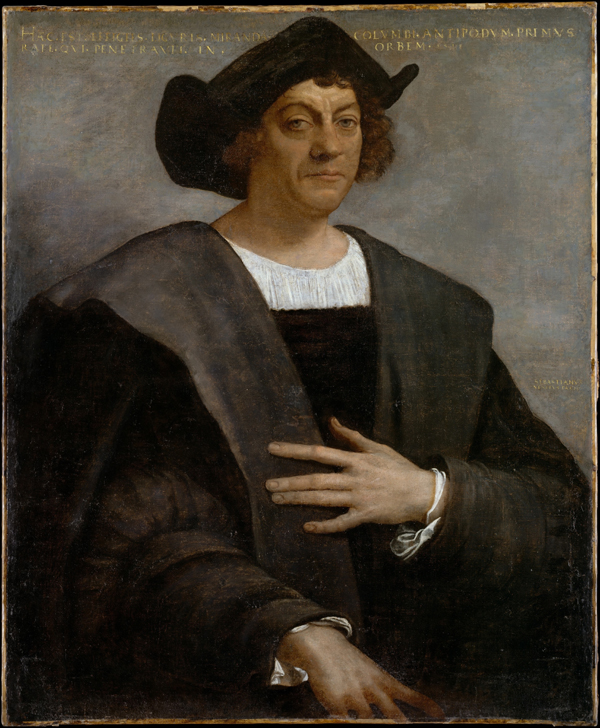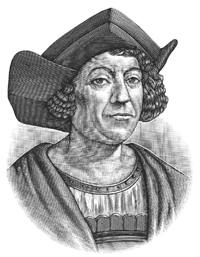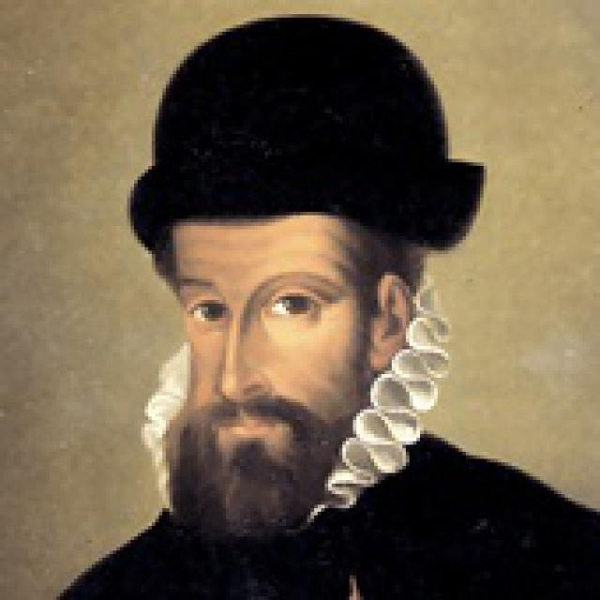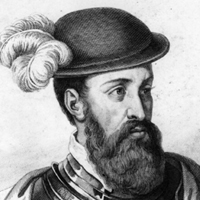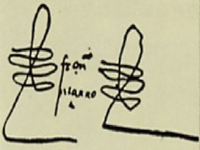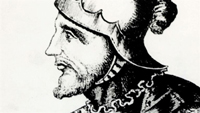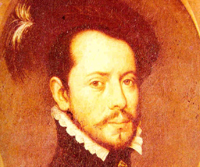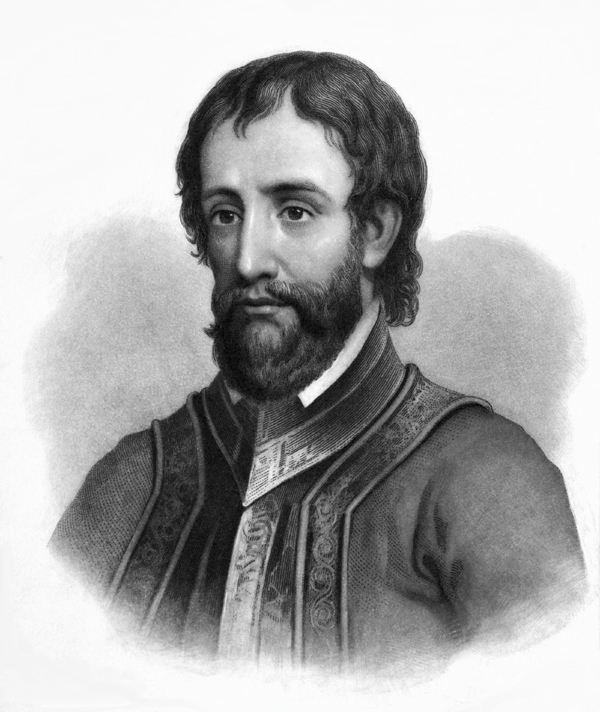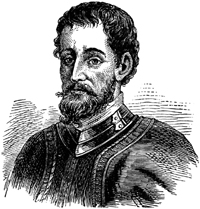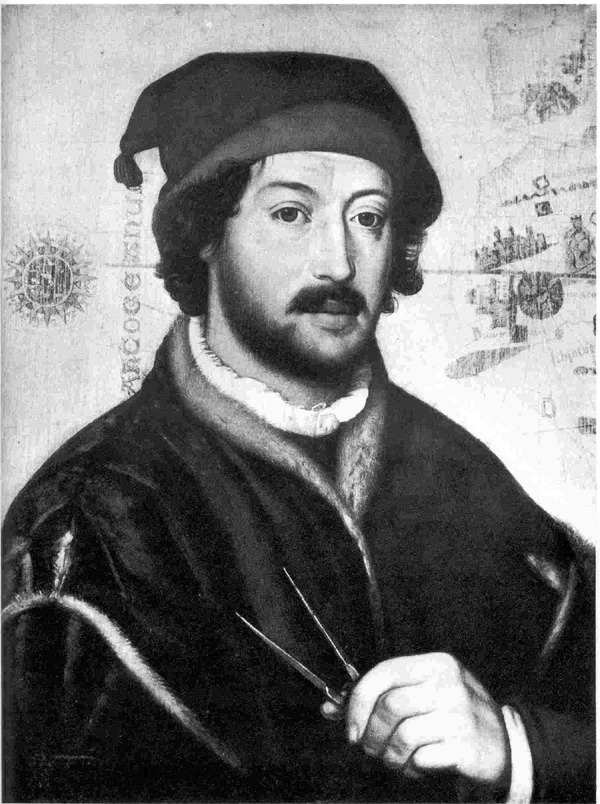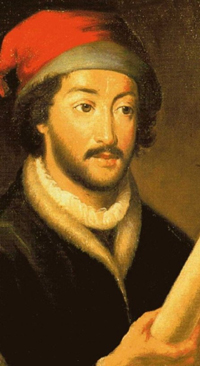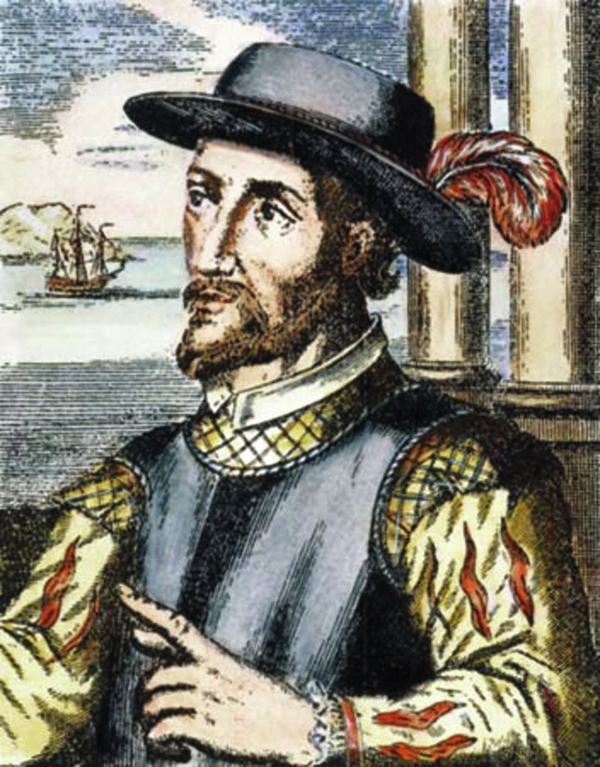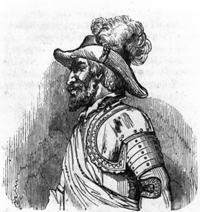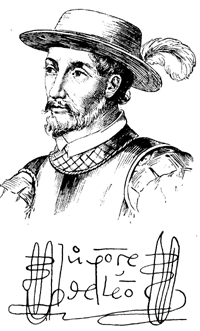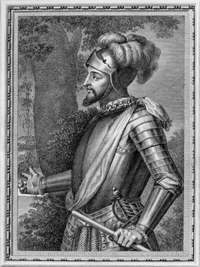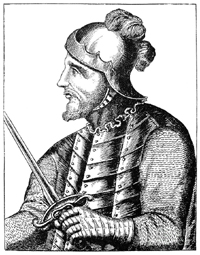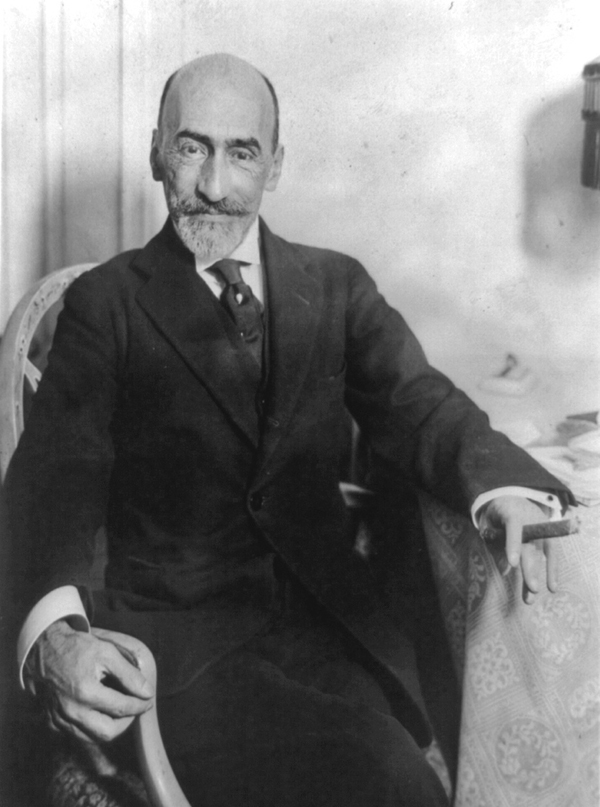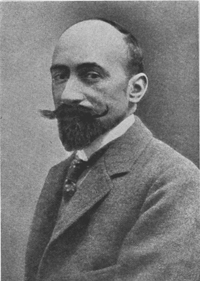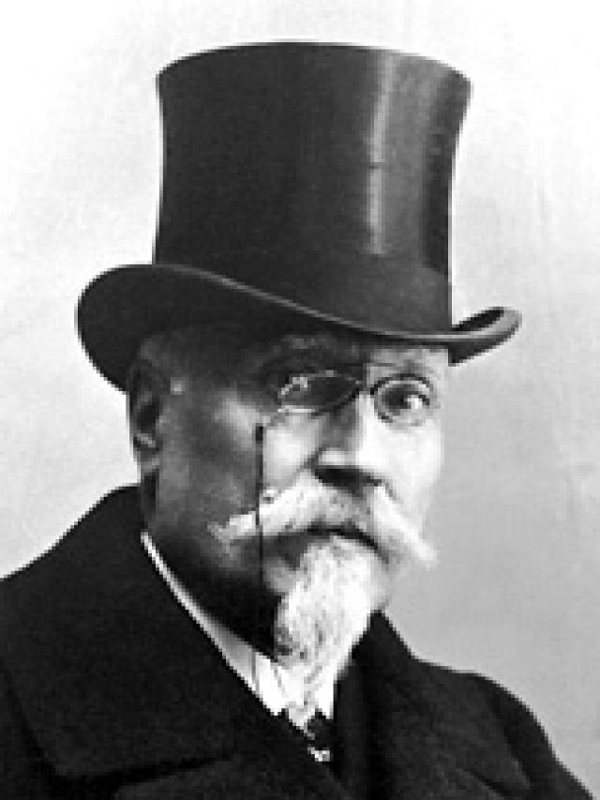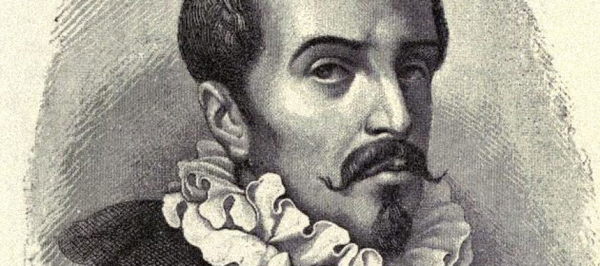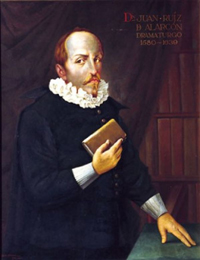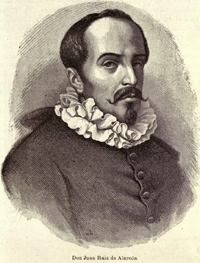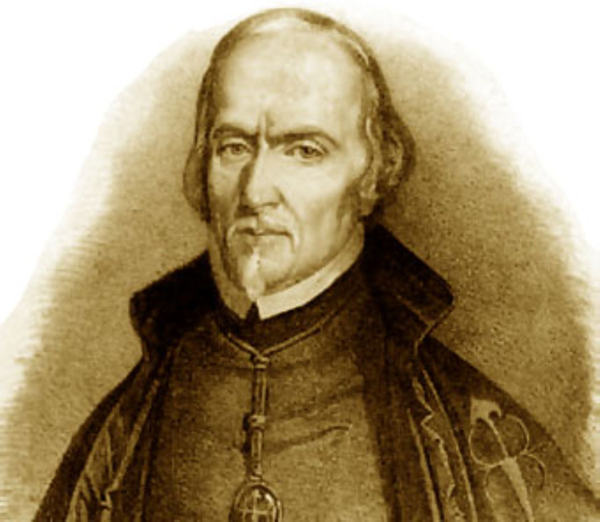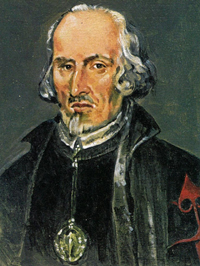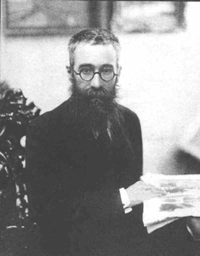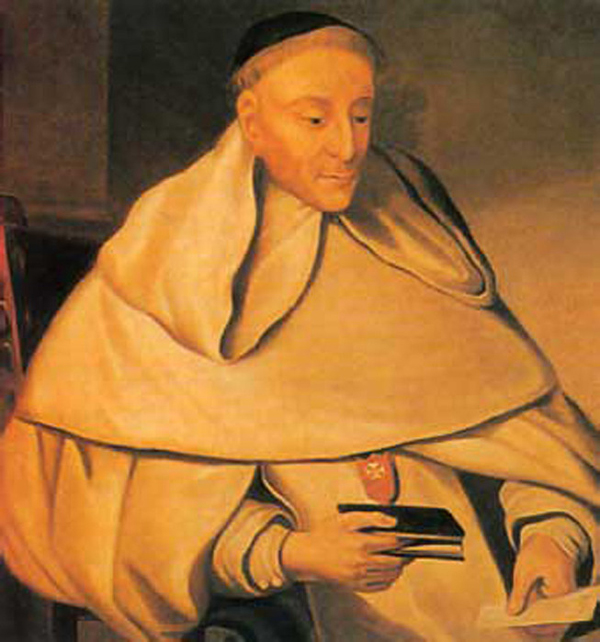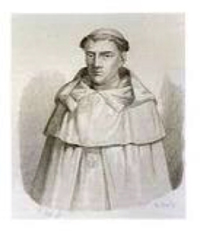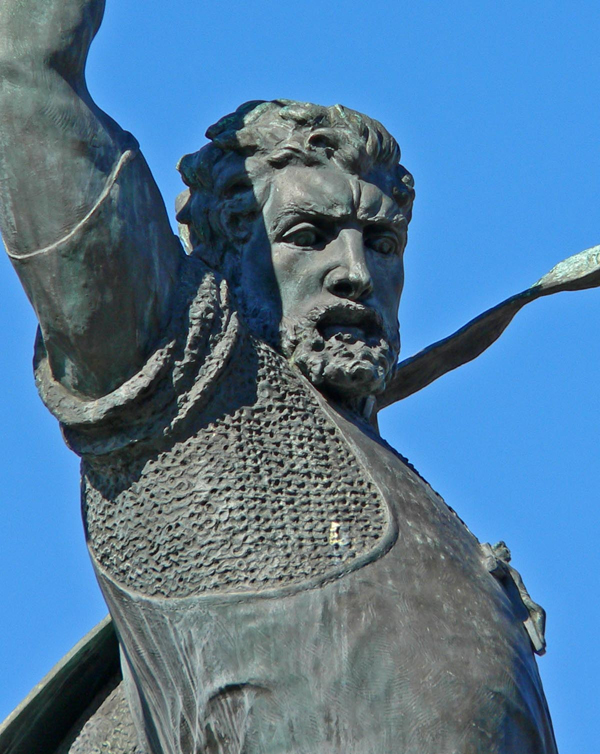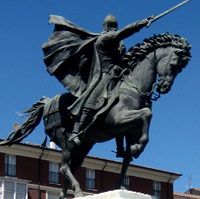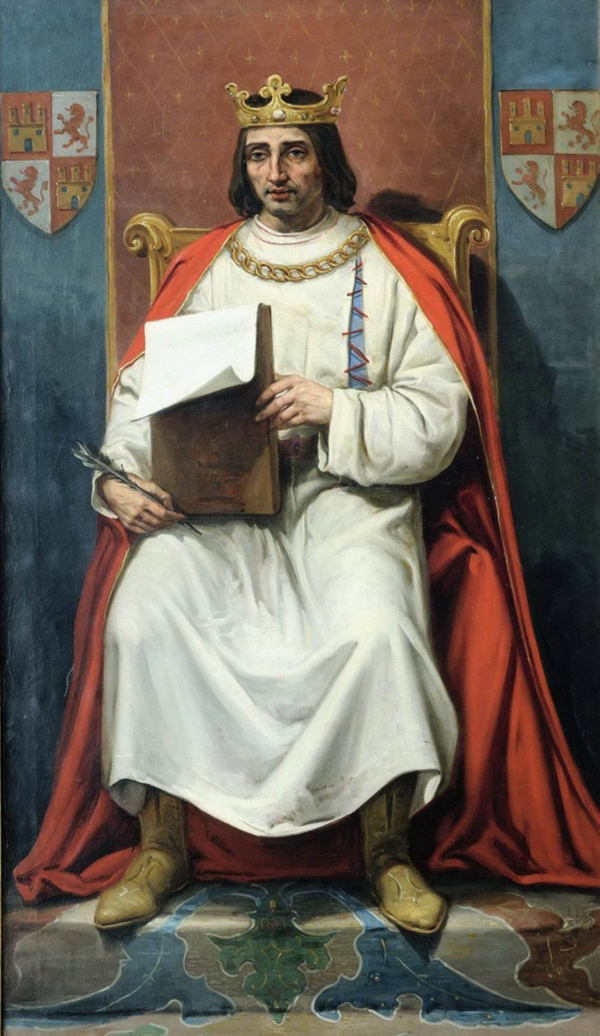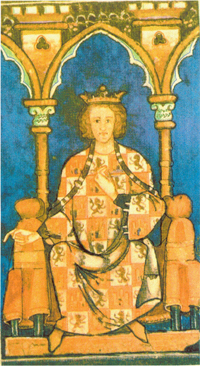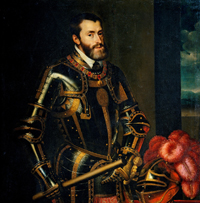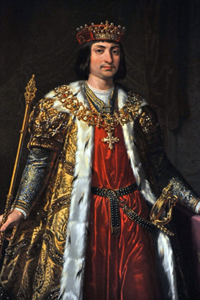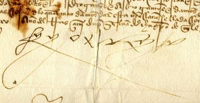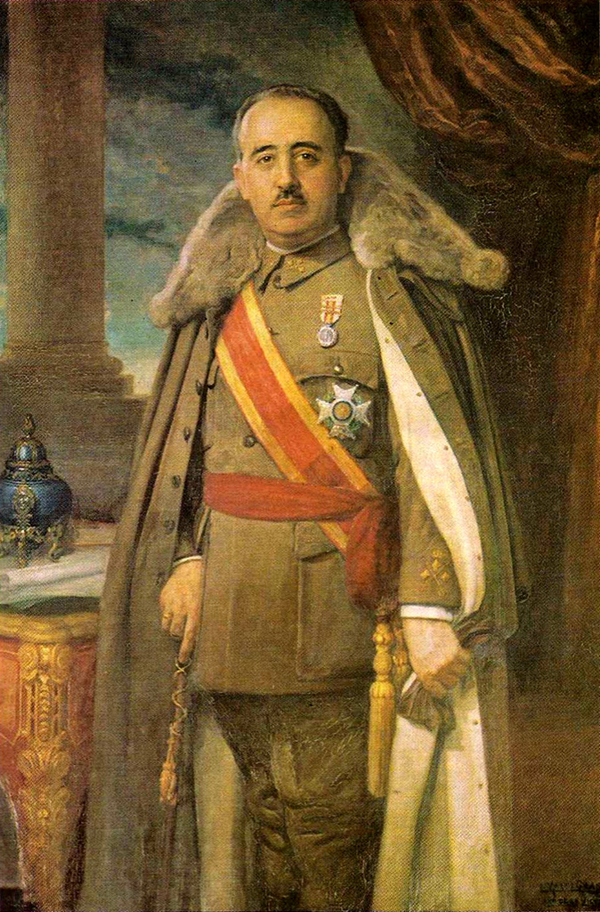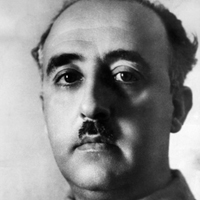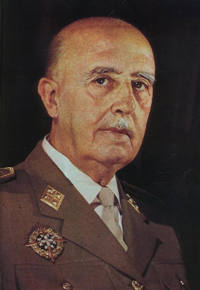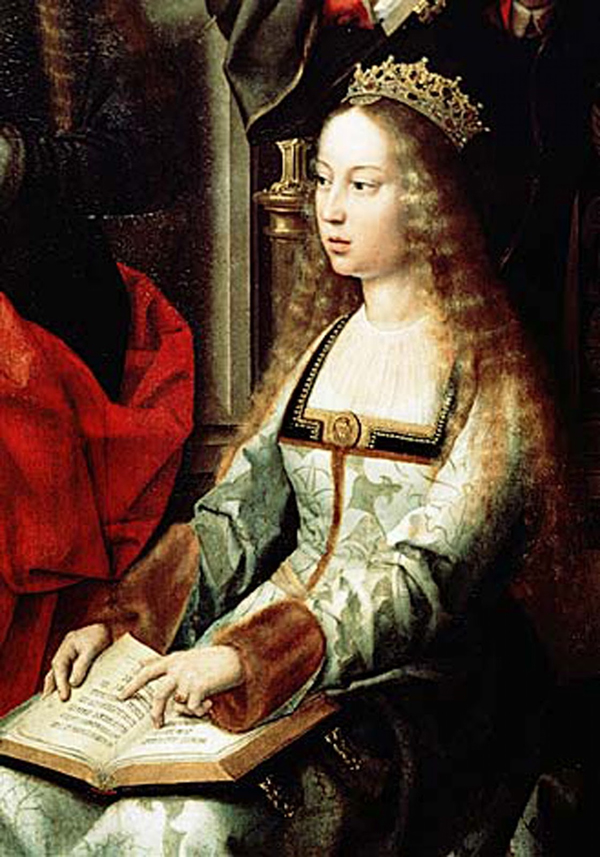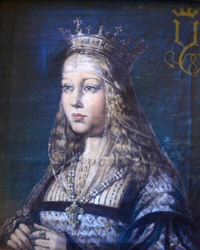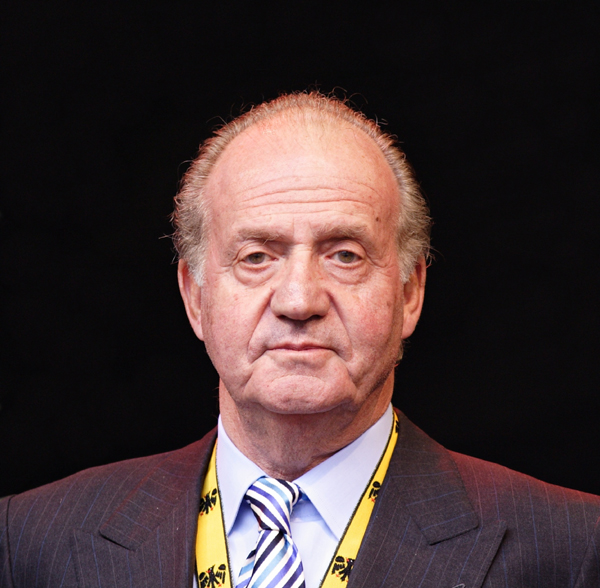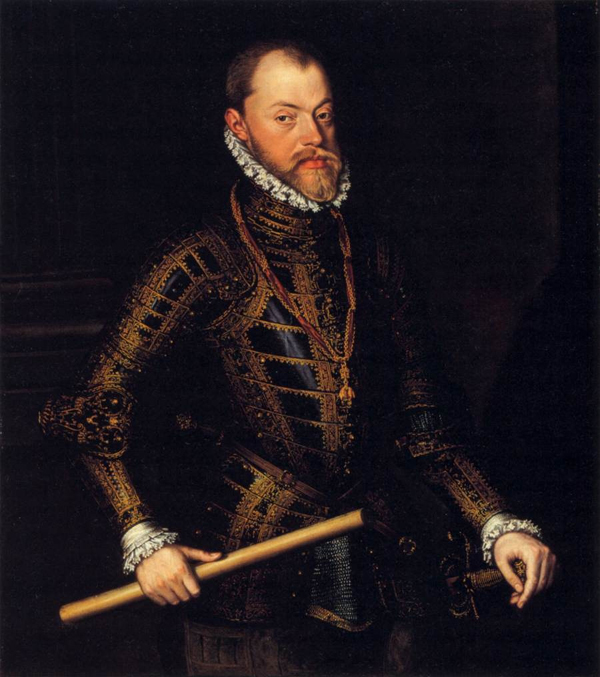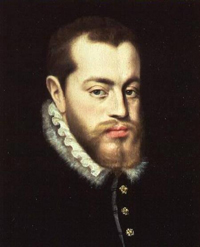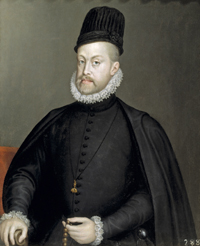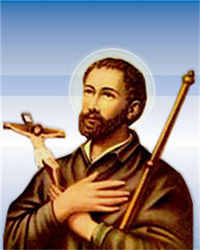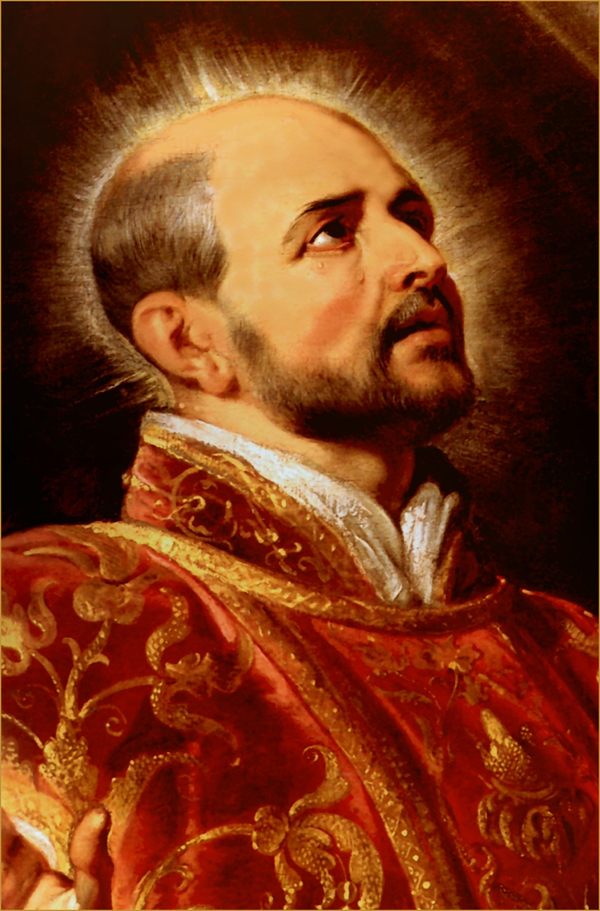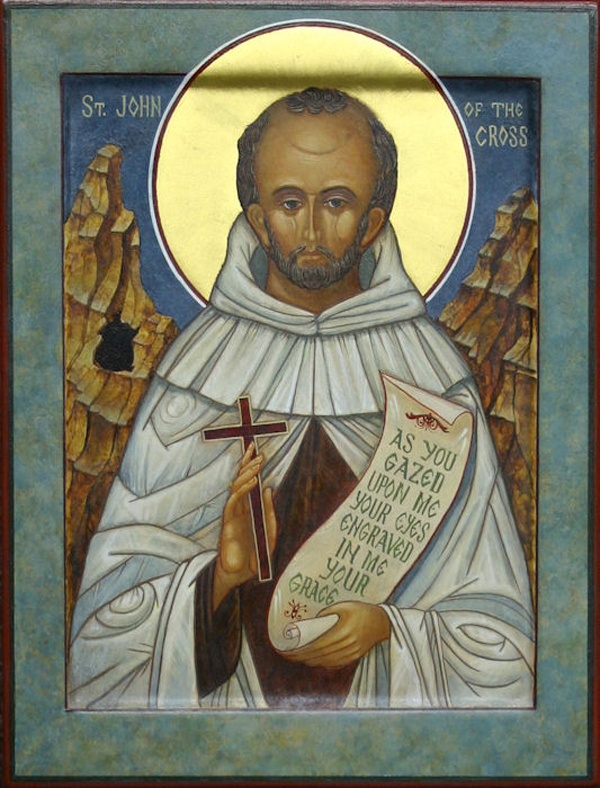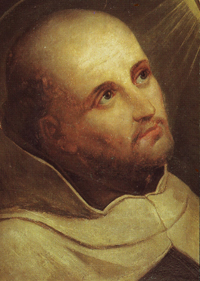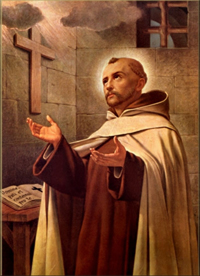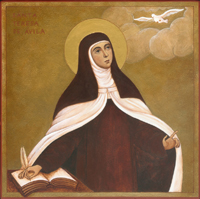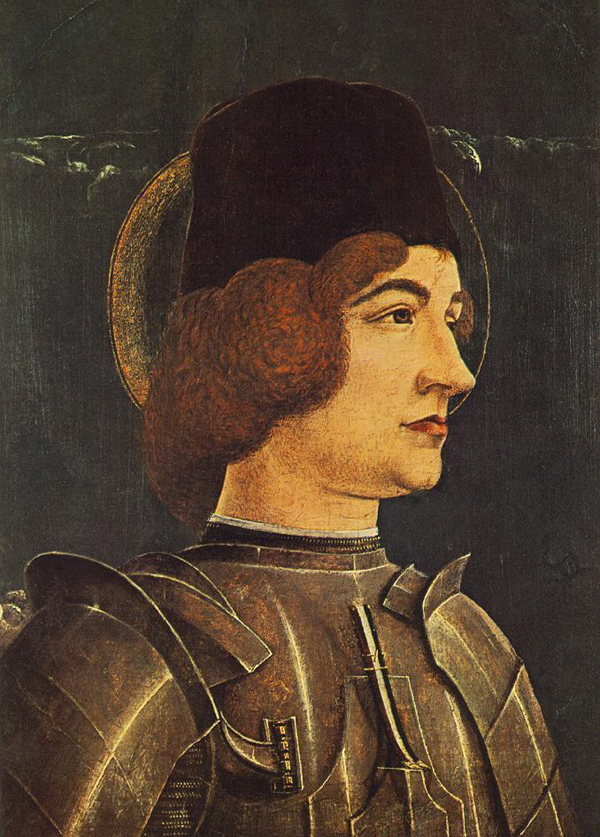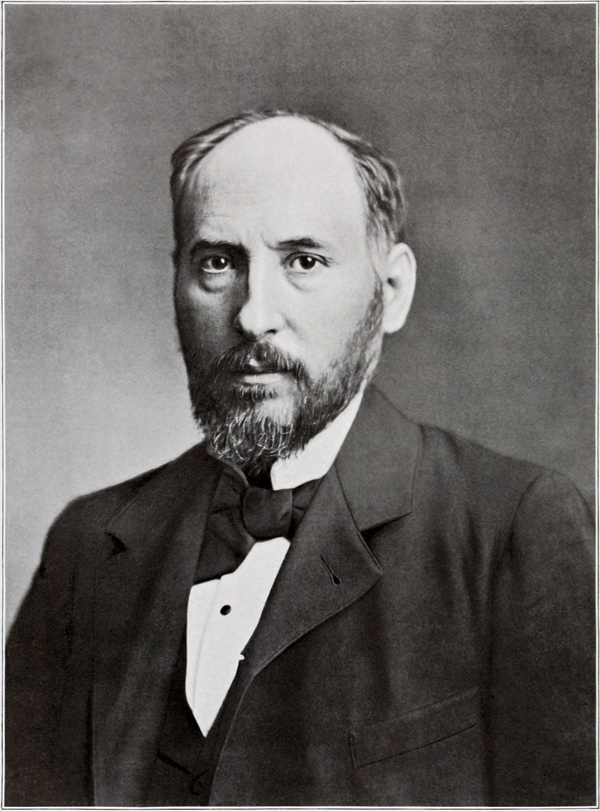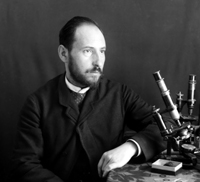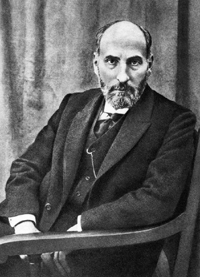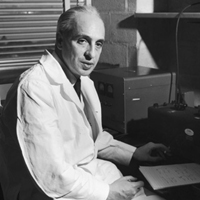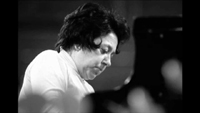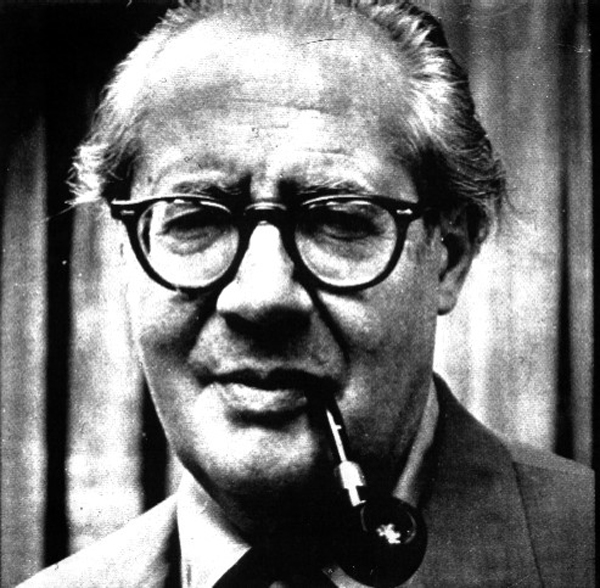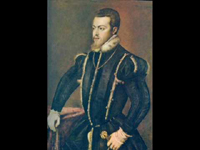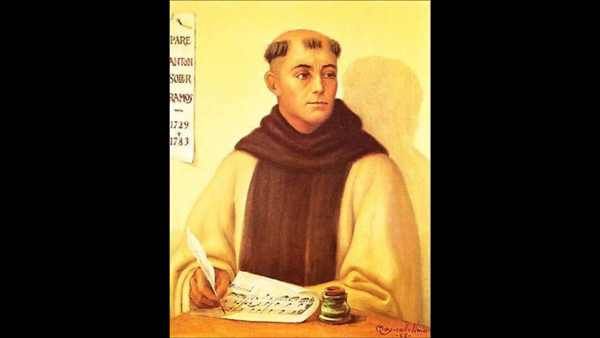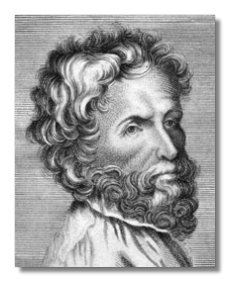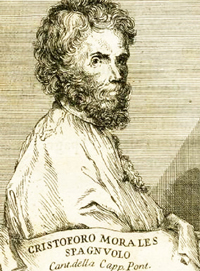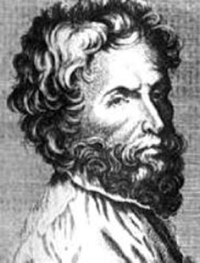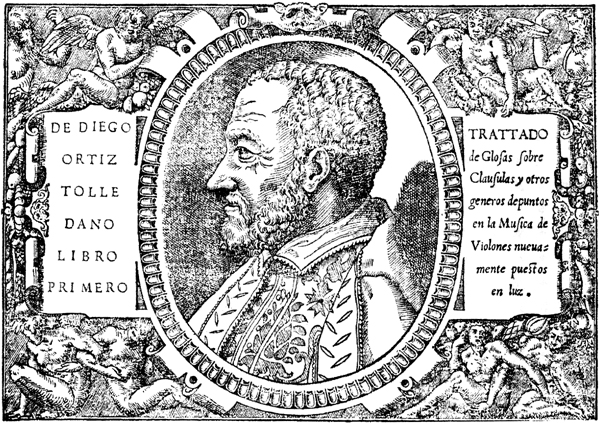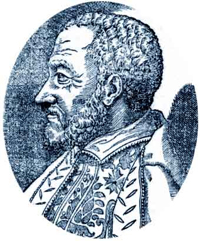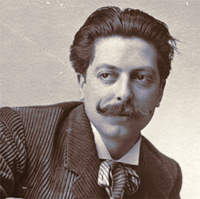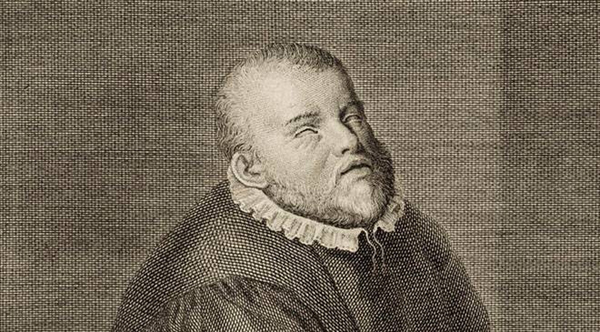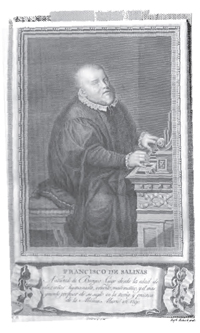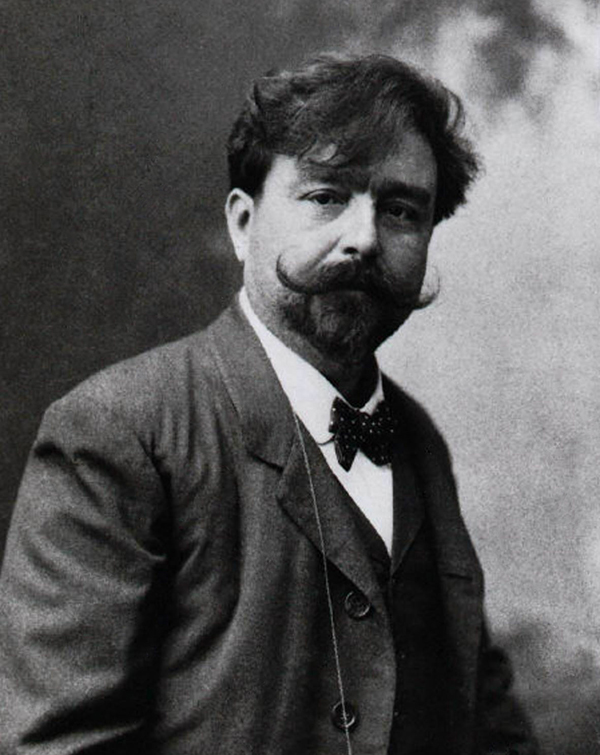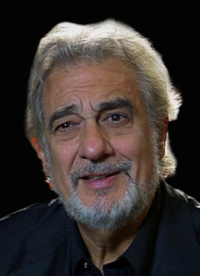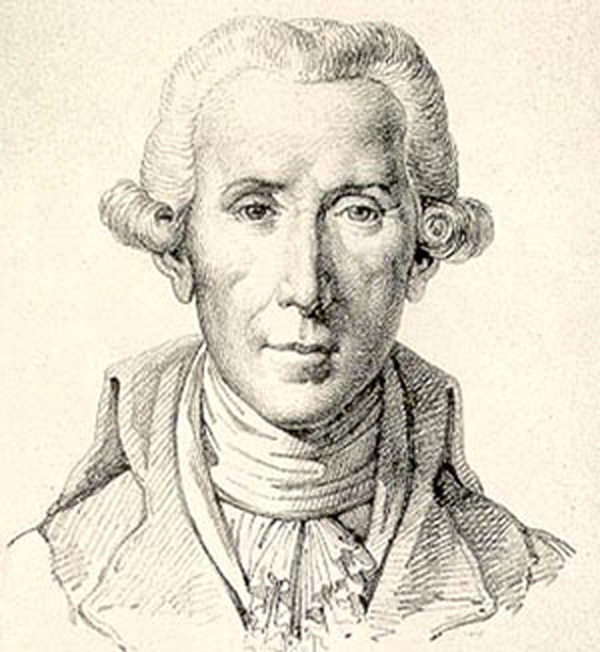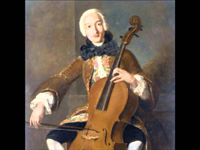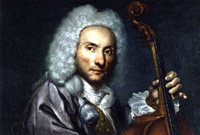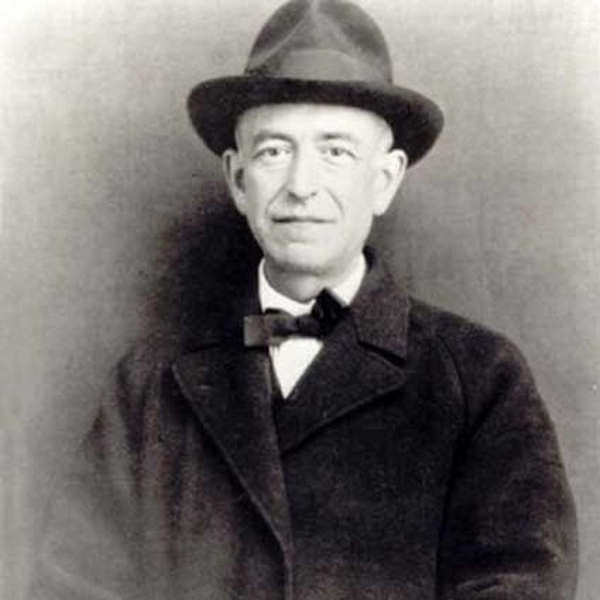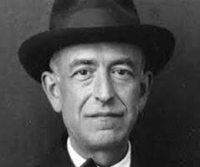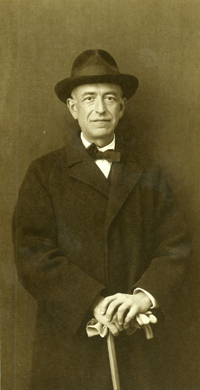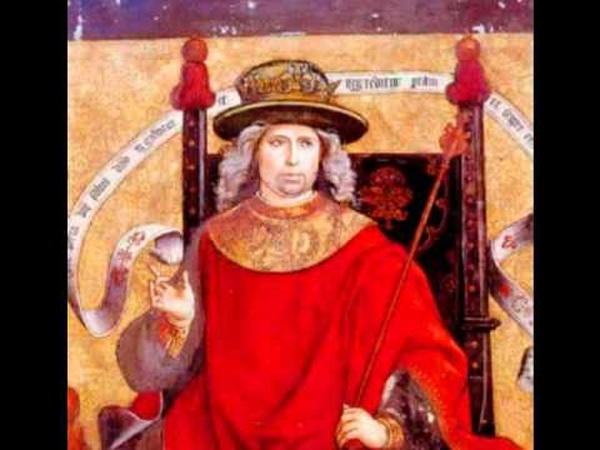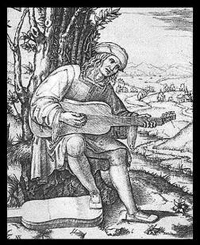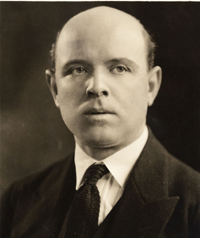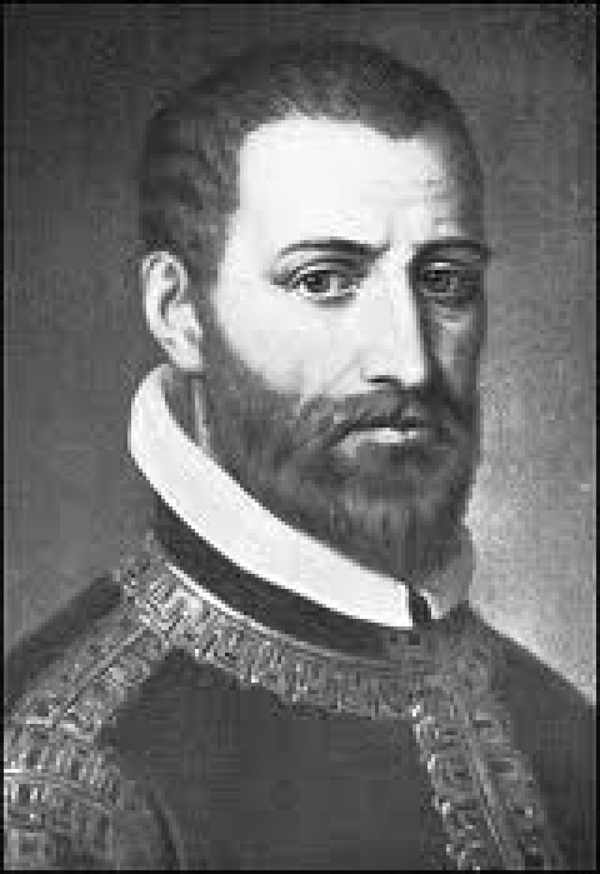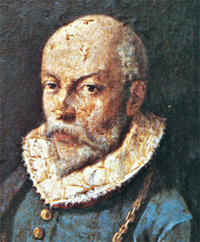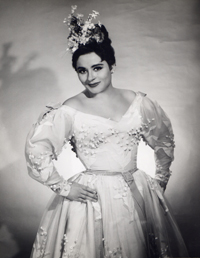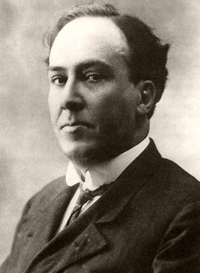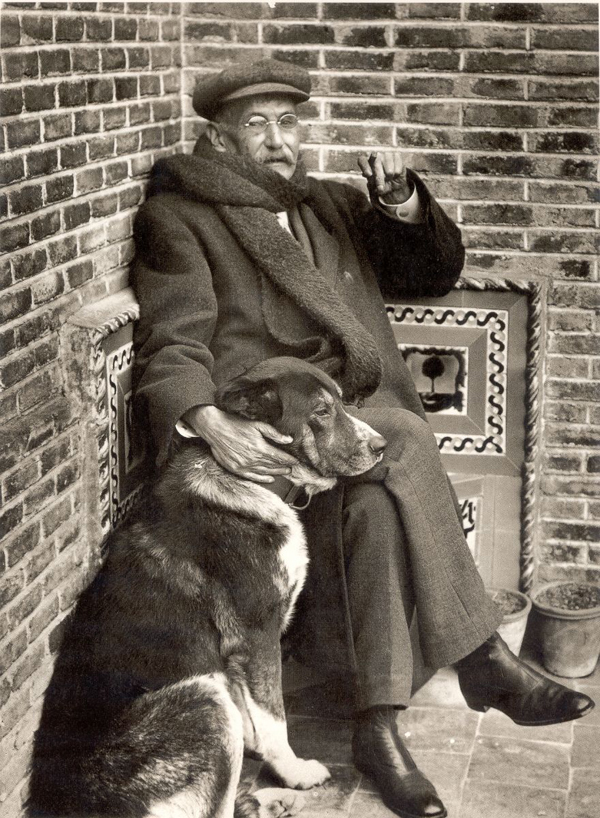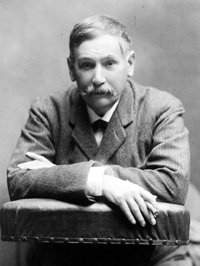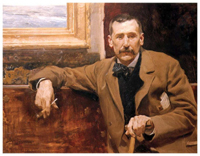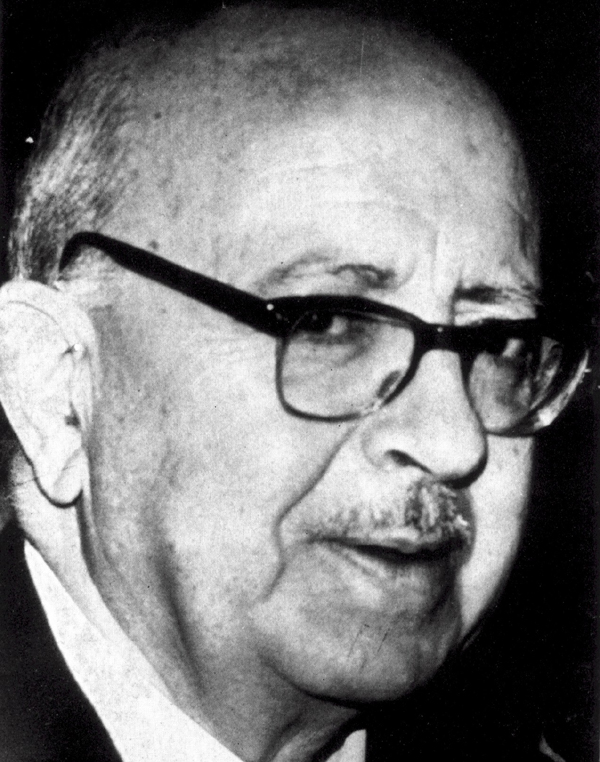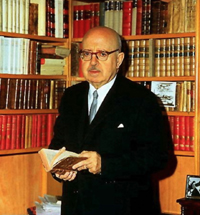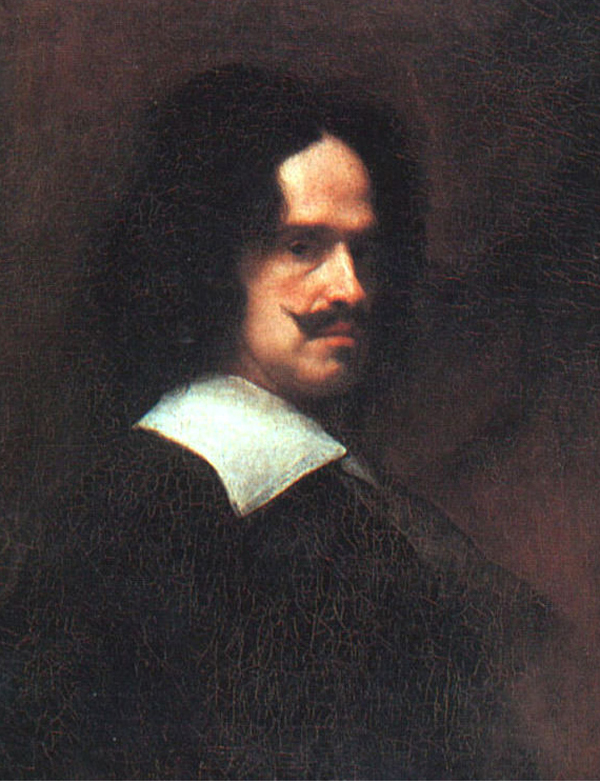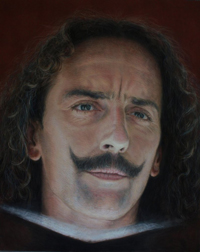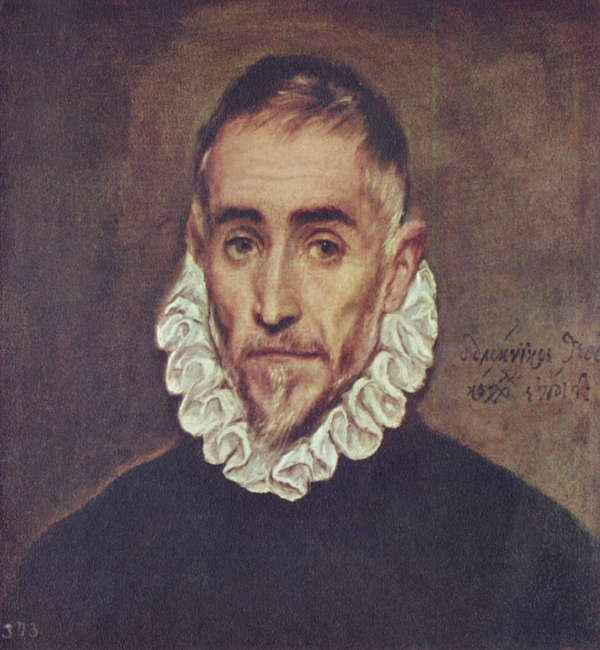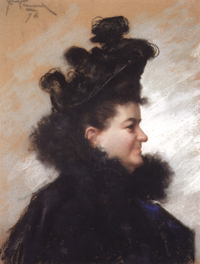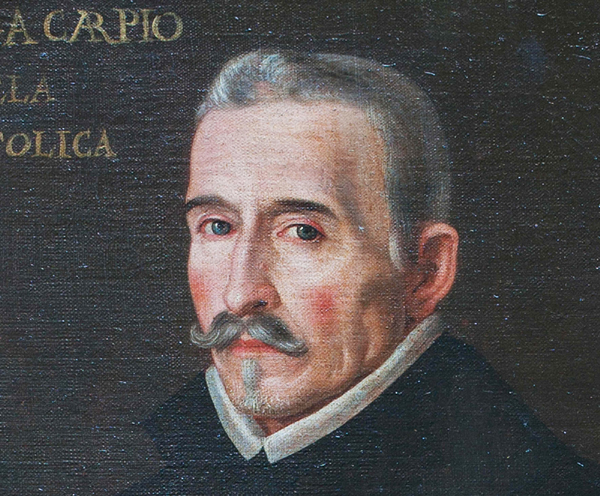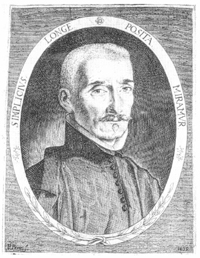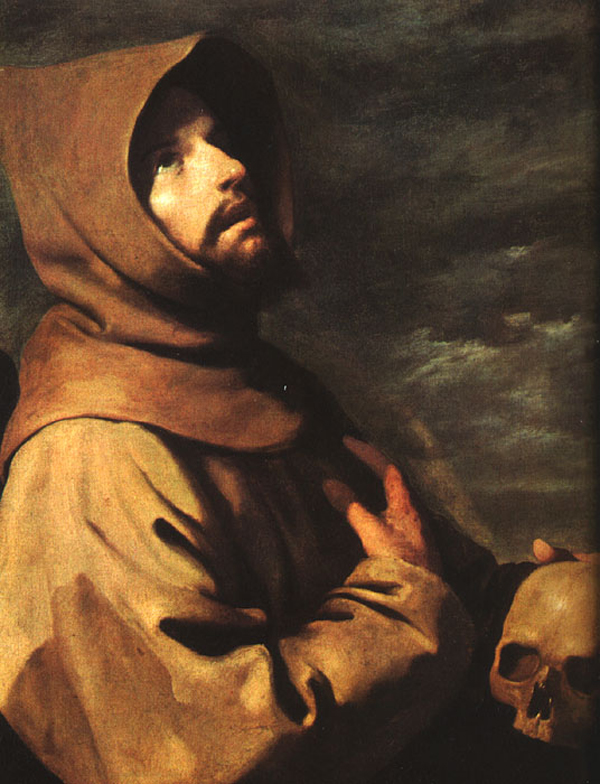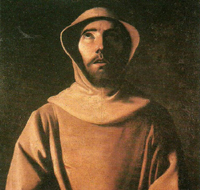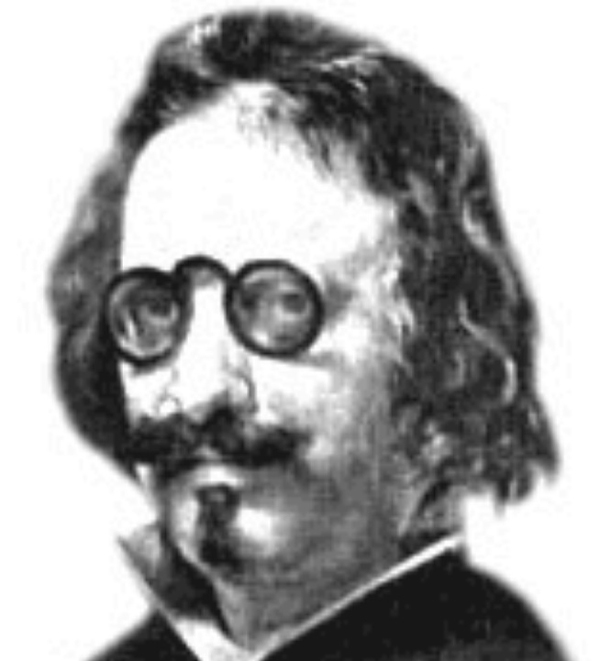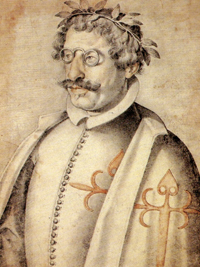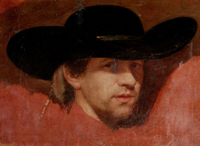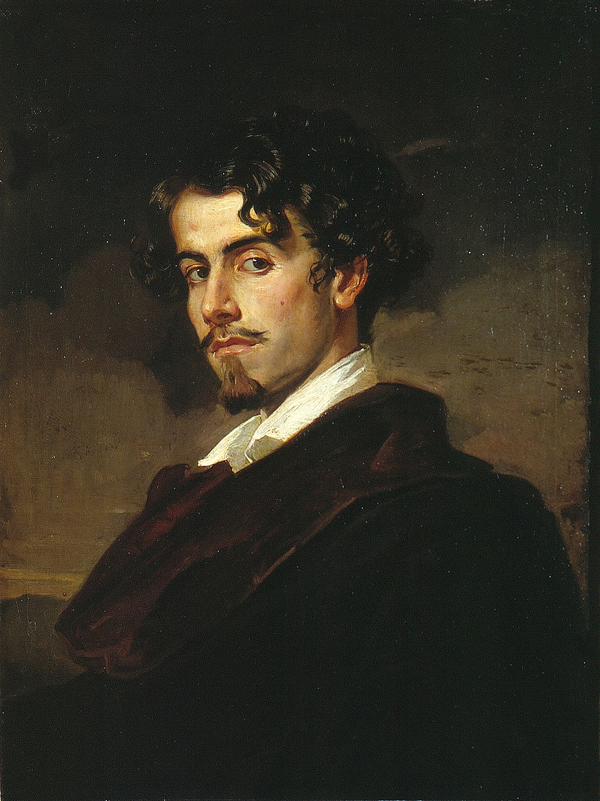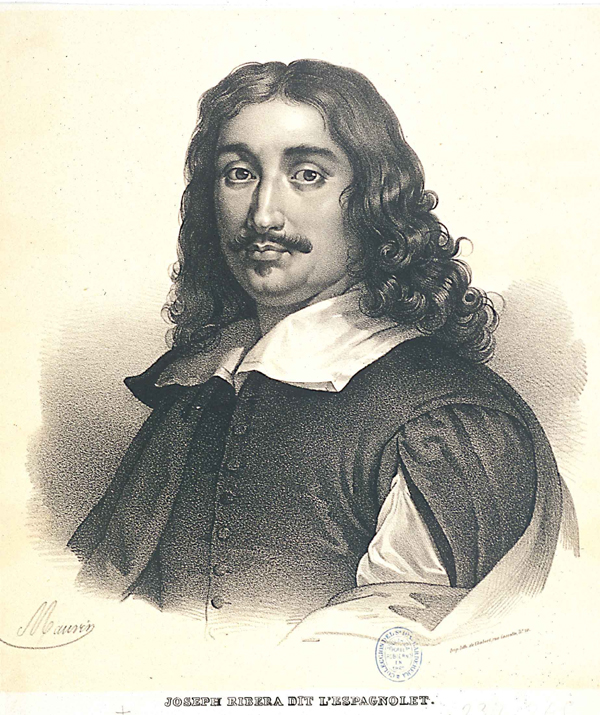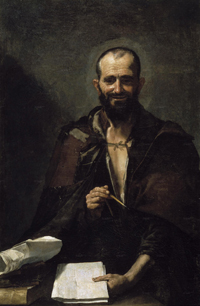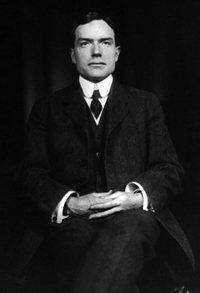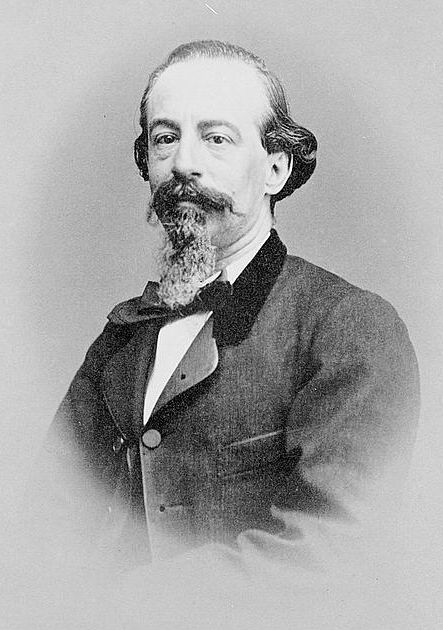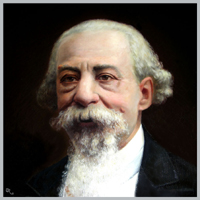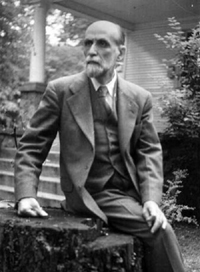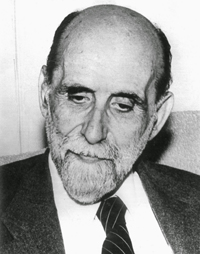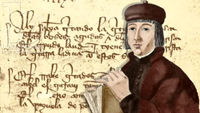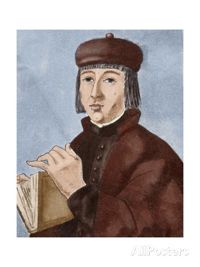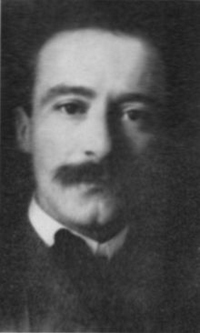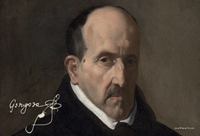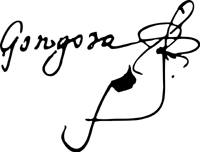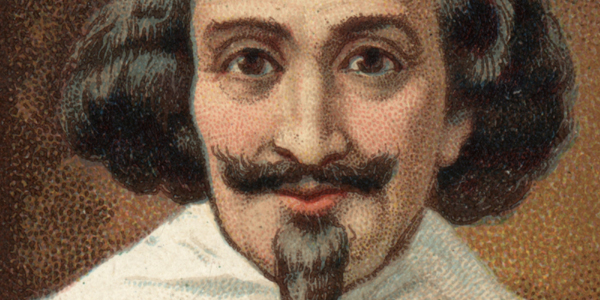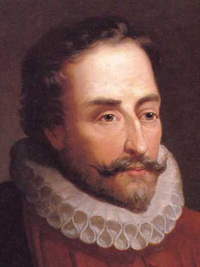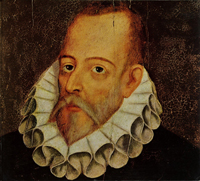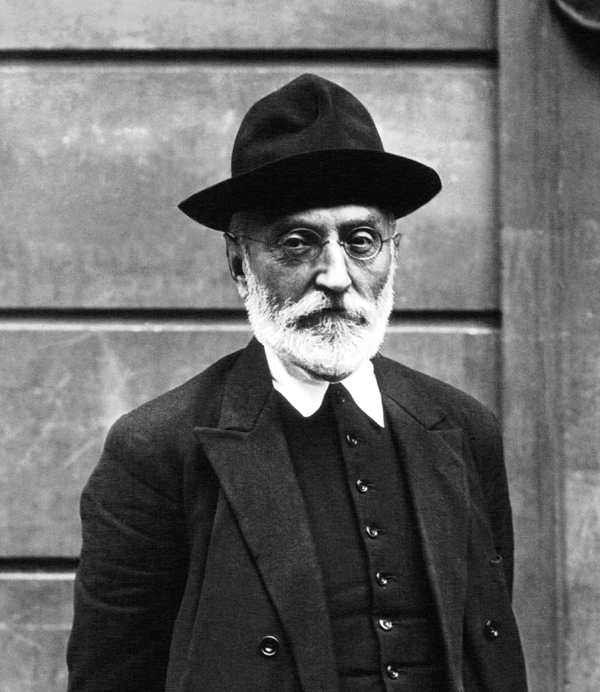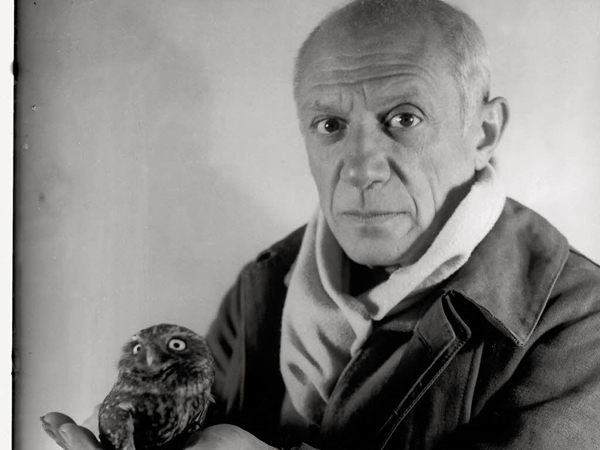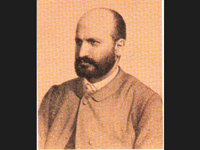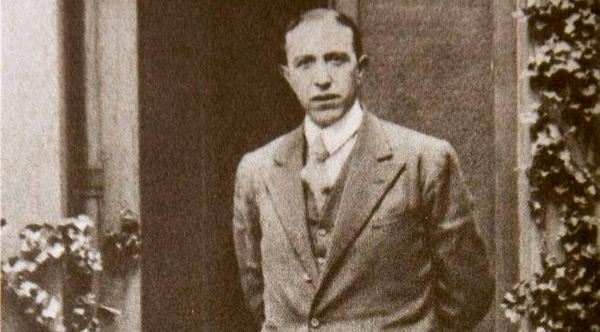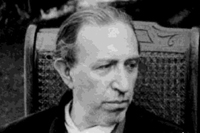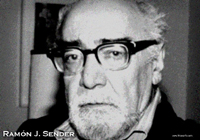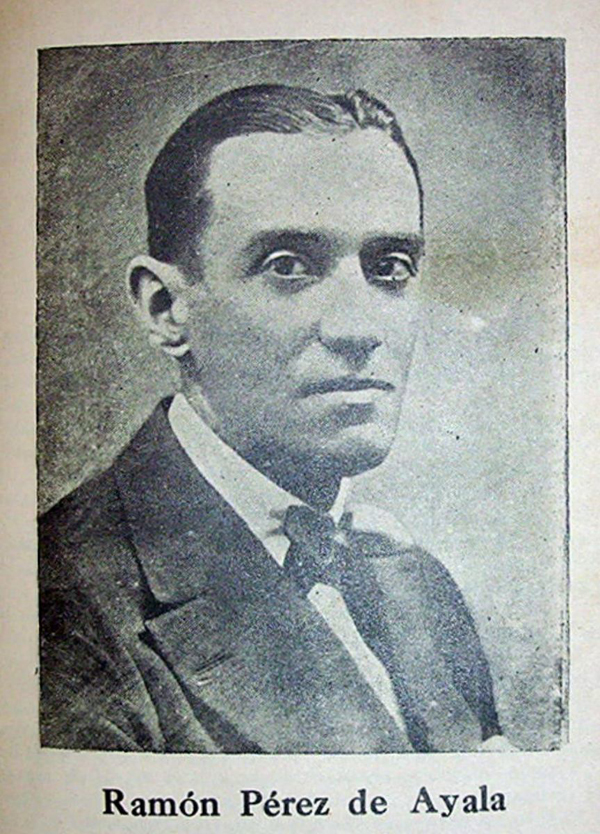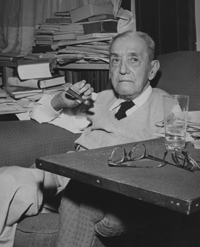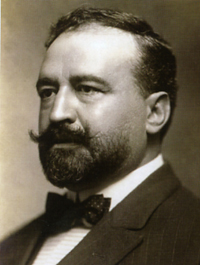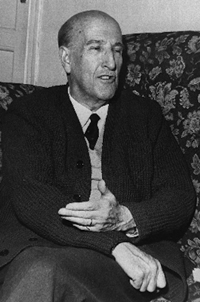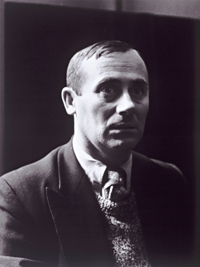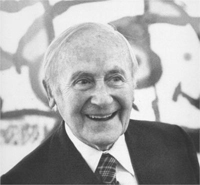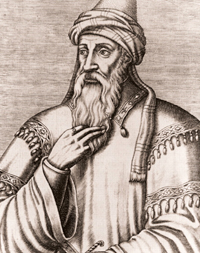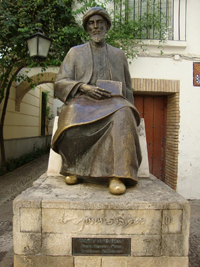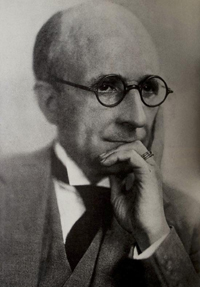History
Academics and Intellectuals
José Ortega y Gasset
Known For: Yo soy yo y mi circunstancia, Raciovitalismo, Razón HistóricaMiguel de Unamuno y Jugo (1864–1936) and José Ortega y Gasset (1883–1955) are highly regarded Spanish philosophers.José Ortega y Gasset was a Spanish liberal philosopher and essayist working during the first half of the 20th century while Spain oscillated between monarchy, republicanism and dictatorship. His philosophy has been characterized as a "philosophy of life" which "comprised a long-hidden beginning in a pragmatist metaphysics inspired by William James, and with a general method from a realist phenomenology imitating Edmund Husserl, which served both his proto-existentialism (prior to Martin Heidegger's) and his realist historicism which has been compared to both Wilhelm Dilthey and Benedetto Croce."
Country: Spain
Date of Birth: 9 May 1883
Place of Birth: Madrid, Spain
Date of Death: 18 October 1955
Please of Death: Madrid, Spain
ʾAbū l-Walīd Muḥammad Ibn ʾAḥmad Ibn Rušd
Known For:
Defended Aristotelian philosophy, wrote Bidāyat al-Mujtahid wa Nihāyat al-Muqtaṣid ( بداية المجتهد و نهاية المقتصد) (textbook of Maliki doctrine in a comparative framework), wrote Kulliyat (Colliget) (medical encyclopedia)
Important Spanish thinkers of the Middle Ages included Averroës (Ibn Rushd, or Abu al-Walid Muhammad ibn Ahmad ibn Rushd, 1126–98), philosopher; Maimonides (Moses ben Maimon, also known as the Rambam, 1135–1204), the great Jewish physician and philosopher; Benjamin de Tudela (d.1173), geographer and historian; King Alfonso X (the Wise, 1226?–84), jurist, historian, musician, and astronomer; Juan Ruiz (1283?–1351?), archpriest of Hita, the greatest Spanish medieval poet; and Fernando de Rojas (1475?–1538?), a dramatic poet.
Averroës a Berber medieval Andalusian polymath. He wrote on logic, Aristotelian and Islamic philosophy, theology, the Maliki school of Islamic jurisprudence, psychology, political and Andalusian classical music theory, geography, mathematics, and the mediæval sciences of medicine, astronomy, physics, and celestial mechanics. Averroes was born in Córdoba, Al Andalus (present-day Spain), and died at Marrakesh in present-day Morocco. His body was interred in his family tomb at Córdoba. The 13th-century philosophical movement based on Averroes's work is called Averroism. Averroes was a defender of Aristotelian philosophy against Ash'ari theologians led by Al-Ghazali. Although highly regarded as a legal scholar of the Maliki school of Islamic law, Averroes's philosophical ideas were considered controversial in Ash'arite Muslim circles. Averroes had a greater impact on Christian Europe: he has been described as the "founding father of secular thought in Western Europe" and was known by the sobriquet the Commentator for his detailed emendations to Aristotle. Latin translations of Averroes's work led the way to the popularization of Aristotle.
Country: Spain
Date of Birth: 14 April 1126
Place of Birth: Córdoba, Al-Andalus, Almoravid emirate (in present-day Spain)
Date of Death: 10 December 1198
Please of Death: Marrakesh, Maghreb, Almohad Caliphate (in present-day Morocco)
Inventors, Discoverers, & Explorers
Álvar Núñez Cabeza de Vaca
Known For: La Relación (account of his experiences on what is now known as Galveston Island), Governor of Rio de PlataAmong the later explorers, Alvar Núñez Cabeza de Vaca (1490?–1557?), Hernando de Soto (d.1542), and Francisco Vázquez de Coronado (1510–54) became famous for their explorations in the southern and southwestern parts of the present US; Juan Ponce de León (1460?–1521), for his travels in Florida; Vasco Núñez de Balboa (1475–1517), for his European discovery of the Pacific Ocean and claim of it for Spain; Francisco Pizarro (1470?–1541), for his conquest of Peru; and Hernán Cortés (1485–1547) for his conquest of Mexico.Álvar Núñez Cabeza de Vaca was a Spanish explorer of the New World, one of four survivors of the 1527 Narváez expedition. During eight years of traveling across the US Southwest, he became a trader and shaman to various Native American tribes before reconnecting with Spanish colonial forces in Mexico in 1536. After returning to Spain in 1537, he wrote an account, first published in 1542 as La Relación ("The Relation", or in more modern terms "The Account"), which in later editions was retitled Naufragios ("Shipwrecks"). Cabeza de Vaca has been considered notable as a proto-anthropologist for his detailed accounts of the many tribes of American Indians that he encountered. However, some critics argue against this claim and categorize him with a group of writers who had motives to present their work in a positive light for the king, who supported the expedition and could continue financial assistance for successful ventures. In 1540 Cabeza de Vaca was appointed adelantado of then present-day Argentina, where he was governor and captain general of Río de la Plata. He aimed to re-establish the settlement of Buenos Aires due to the poor administration. Cabeza de Vaca was then transported to Spain for trial in 1545. Although his sentence was eventually commuted, he never returned to the Americas. He died in Seville.
Country: Spain
Date of Birth: ca. 1488 / 1490/ 1492
Place of Birth: Jerez de la Frontera
Date of Death: ca. 1557 / 1558/ 1559/ 1560
Please of Death: Seville, Spain
Spouse: María Marmolejo
Benjamin of Tudela
Known For: The Travels of BenjaminImportant Spanish thinkers of the Middle Ages included Averroës (Ibn Rushd, or Abu al-Walid Muhammad ibn Ahmad ibn Rushd, 1126–98), philosopher; Maimonides (Moses ben Maimon, also known as the Rambam, 1135–1204), the great Jewish physician and philosopher; Benjamin de Tudela (d.1173), geographer and historian; King Alfonso X (the Wise, 1226?–84), jurist, historian, musician, and astronomer; Juan Ruiz (1283?–1351?), archpriest of Hita, the greatest Spanish medieval poet; and Fernando de Rojas (1475?–1538?), a dramatic poet.Benjamin of Tudela was a medieval Jewish traveler who visited Europe, Asia, and Africa in the 12th century. His vivid descriptions of western Asia preceded those of Marco Polo by a hundred years. With his broad education and vast knowledge of languages, Benjamin of Tudela is a major figure in medieval geography and Jewish history.
Country: Spain
Date of Birth: ca. 1130
Place of Birth: Kingdom of Navarre
Date of Death: ca. 1173
Please of Death: Castile
Cristoforo Colombo
Known For: Four voyages across the Atlantic Ocean, Initiating the Spanish colonization of the New WorldThe first great explorer for Spain was Christopher Columbus (Cristoforo Colombo or Cristóbal Colón, 1451–1506), a seaman of Genoese birth but possibly of Judeo-Catalán origin, who made four voyages of discovery to the Americas, the first landing occurring on 12 October 1492 on the island of Guanahaní (probably on the island now called San Salvador) in the Bahamas.Christopher Columbus was an Italian explorer, navigator, and colonizer, citizen of the Republic of Genoa. Under the auspices of the Catholic Monarchs of Spain, he completed four voyages across the Atlantic Ocean. Those voyages, and his efforts to establish permanent settlements on the island of Hispaniola, initiated the Spanish colonization of the New World. In the context of emerging western imperialism and economic competition between European kingdoms through the establishment of trade routes and colonies, Columbus' proposal to reach the East Indies by sailing westward, eventually received the support of the Spanish Crown, which saw in it a chance to enter the spice trade with Asia through a new westward route. During his first voyage in 1492, instead of reaching Japan as he had intended, Columbus landed in a New World, landing in the Bahamas archipelago, on an island he named San Salvador. Over the course of three more voyages, Columbus visited the Greater and Lesser Antilles, as well as the Caribbean coast of Venezuela and Central America, claiming them for the Spanish Empire. Though Columbus was not the first European explorer to reach the Americas (having been preceded by the Norse expedition led by Leif Ericson in the 11th century), his voyages led to the first lasting European contact with the Americas, inaugurating a period of European exploration, conquest, and colonization that lasted for several centuries. They had, therefore, an enormous impact in the historical development of the modern Western world. Columbus himself saw his accomplishments primarily in the light of spreading the Christian religion. Never admitting that he had reached a continent previously unknown to Europeans, rather than the East Indies he had set out for, Columbus called the inhabitants of the lands he visited indios (Spanish for "Indians"). Columbus' strained relationship with the Spanish crown and its appointed colonial administrators in America led to his arrest and dismissal as governor of the settlements on the island of Hispaniola in 1500, and later to protracted litigation over the benefits which Columbus and his heirs claimed were owed to them by the crown.
Country: Spain
Date of Birth: ca. Before 31 October 1451
Place of Birth: Genoa, Republic of Genoa
Date of Death: 20 May 1506
Please of Death: Valladolid, Crown of Castile
Spouse: Filipa Moniz Perestrelo
Francisco Pizarro González
Known For: Spanish conquest of the Inca EmpireAmong the later explorers, Alvar Núñez Cabeza de Vaca (1490?–1557?), Hernando de Soto (d.1542), and Francisco Vázquez de Coronado (1510–54) became famous for their explorations in the southern and southwestern parts of the present US; Juan Ponce de León (1460?–1521), for his travels in Florida; Vasco Núñez de Balboa (1475–1517), for his European discovery of the Pacific Ocean and claim of it for Spain; Francisco Pizarro (1470?–1541), for his conquest of Peru; and Hernán Cortés (1485–1547) for his conquest of Mexico.Francisco Pizarro González was a Spanish conquistador who conquered the Incan Empire. Pizarro González was born in Trujillo, Spain, the illegitimate son of Gonzalo Pizarro, an infantry colonel, and Francisca González, a woman of poor means. His exact birth date is uncertain, but is believed to be sometime in the 1470s, probably 1471. Scant attention was paid to his education and he grew up illiterate. He was a distant cousin of Hernán Cortés. On 10 November 1509, Pizarro sailed from Spain to the New World with Alonzo de Ojeda on an expedition to Urabí. He sailed to Cartagena and joined the fleet of Martín Fernández de Enciso, and, in 1513, accompanied Balboa to the Pacific. In 1514, he found a supporter in Pedrarias Dávila, the Governor of Castilla de Oro, and was rewarded for his role in the arrest of Balboa with the positions of mayor and magistrate in Panama City, serving from 1519 to 1523. Reports of Peru's riches and Cortés's success in Mexico tantalized Pizarro and he undertook two expeditions to conquer the Incan Empire in 1524 and in 1526. Both failed as a result of native hostilities, bad weather, and lack of provisions. Pedro de los Ríos, the Governor of Panama, made an effort to recall Pizarro, but the conquistador resisted and remained in the south. In April 1528, he reached northern Peru and found the natives rich with precious metals. This discovery gave Pizarro the motivation to plan a third expedition to conquer Peru, and he returned to Panama to make arrangements, but the Governor refused to grant permission for the project. Pizarro returned to Spain to appeal directly to King Charles I. His plea was successful, and he received not only a license for the proposed expedition but considerable authority over any lands conquered during the venture. He was joined by family and friends, and the expedition left Panama in 1530. When hostile natives along the coast threatened the expedition, Pizarro moved inland and founded the first Spanish settlement in Peru, San Miguel de Piura. Inca Atahualpa refused to tolerate a Spanish presence in his lands but was captured by Pizarro during the Battle of Cajamarca on 16 November 1532. A ransom for the Emperor's release was demanded and Atahualpa filled a room with gold, but Pizarro charged him with various crimes and executed Atahualpa on 26 July 1533, much to the opposition of his associates who thought the conquistador was overstepping his authority. The same year, Pizarro entered the Incan capital of Cuzco, and the conquest of Peru was complete. In January 1535, Pizarro founded the city of Lima, a project he considered his greatest achievement. Quarrels between Pizarro and his longtime comrade-in-arms Diego Almagro culminated in the Battle of Las Salinas. Almagro was captured and executed, and, on 26 June 1541, his embittered son assassinated Pizarro in Lima. The conqueror of Peru was laid to rest in the Lima Cathedral. When historians compare Pizarro's and Cortés's conquests of Peru and Mexico, they usually give the palm to Pizarro because he led fewer men, faced larger armies, and was far from Spanish outposts in the Caribbean which could have supplied men, arms, and provisions. After Pizarro's death, his family built a palace commemorating the conquistador on the Plaza Mayor in Trujillo, but modern Peruvians look askance at Pizarro, considering him the force behind the destruction of their indigenous culture, language, and religion.
Country: Spain
Date of Birth: ca. 1471 or 1476
Place of Birth: Trujillo, Crown of Castile
Date of Death: 26 June 1541
Please of Death: Lima, New Castile
Spouse: Inés Huaylas Yupanqui
Francisco Vázquez de Coronado y Luján
Known For: Led a large expedition from Mexico to present-day Kansas, Discovered the Grand Canyon and the Colorado RiverAmong the later explorers, Alvar Núñez Cabeza de Vaca (1490?–1557?), Hernando de Soto (d.1542), and Francisco Vázquez de Coronado (1510–54) became famous for their explorations in the southern and southwestern parts of the present US; Juan Ponce de León (1460?–1521), for his travels in Florida; Vasco Núñez de Balboa (1475–1517), for his European discovery of the Pacific Ocean and claim of it for Spain; Francisco Pizarro (1470?–1541), for his conquest of Peru; and Hernán Cortés (1485–1547) for his conquest of Mexico.Francisco Vázquez de Coronado y Luján was a Spanish conquistador and explorer, who led a large expedition from Mexico to present-day Kansas through parts of southwestern United States between 1540 and 1542. Coronado had hoped to reach the mythical Seven Cities of Gold. His expedition marked the discovery, by Europeans, of the Grand Canyon and the Colorado River. His name is often Anglicized as Vasquez de Coronado.
Country: Spain
Date of Birth: ca. 1510
Place of Birth: Salamanca, Spain
Date of Death: 22 September 1554
Please of Death: Mexico City
Spouse: Beatriz de Estrada
Hernán Cortés de Monroy y Pizarro
Known For: Spanish conquest of the Aztec EmpireAmong the later explorers, Alvar Núñez Cabeza de Vaca (1490?–1557?), Hernando de Soto (d.1542), and Francisco Vázquez de Coronado (1510–54) became famous for their explorations in the southern and southwestern parts of the present US; Juan Ponce de León (1460?–1521), for his travels in Florida; Vasco Núñez de Balboa (1475–1517), for his European discovery of the Pacific Ocean and claim of it for Spain; Francisco Pizarro (1470?–1541), for his conquest of Peru; and Hernán Cortés (1485–1547) for his conquest of Mexico.Hernán Cortés de Monroy y Pizarro was a Spanish Conquistador who led an expedition that caused the fall of the Aztec Empire and brought large portions of mainland Mexico under the rule of the King of Castile in the early 16th century. Cortés was part of the generation of Spanish colonizers who began the first phase of the Spanish colonization of the Americas. Born in Medellín, Spain, to a family of lesser nobility, Cortés chose to pursue a livelihood in the New World. He went to Hispaniola and later to Cuba, where he received an encomienda and, for a short time, became alcalde (magistrate) of the second Spanish town founded on the island. In 1519, he was elected captain of the third expedition to the mainland, an expedition which he partly funded. His enmity with the Governor of Cuba, Diego Velázquez de Cuéllar, resulted in the recall of the expedition at the last moment, an order which Cortés ignored. Arriving on the continent, Cortés executed a successful strategy of allying with some indigenous people against others. He also used a native woman, Doña Marina, as an interpreter; she would later bear Cortés a son. When the Governor of Cuba sent emissaries to arrest Cortés, he fought them and won, using the extra troops as reinforcements. Cortés wrote letters directly to the king asking to be acknowledged for his successes instead of punished for mutiny. After he overthrew the Aztec Empire, Cortés was awarded the title of Marqués del Valle de Oaxaca, while the more prestigious title of Viceroy was given to a high-ranking nobleman, Antonio de Mendoza. In 1541 Cortés returned to Spain, where he died peacefully but embittered, six years later. Because of the controversial undertakings of Cortés and the scarcity of reliable sources of information about him, it has become difficult to assert anything definitive about his personality and motivations. Early lionizing of the conquistadors did not encourage deep examination of Cortés. Later reconsideration of the conquistadors' character in the context of modern anti-colonial sentiment also did little to expand understanding of Cortés as an individual. As a result of these historical trends, descriptions of Cortés tend to be simplistic, and either damning or idealizing.
Country: Spain
Date of Birth: ca. 1485
Place of Birth: Medellín, Castile
Date of Death: 2 December 1547
Please of Death: Castilleja de la Cuesta, Castile
Spouse: Catalina Suárez Marcaida, doña Juana Ramírez de Arellano de Zúñiga
Hernando de Soto
Known For: First European expedition deep into the territory of the modern-day United States (Florida, Georgia, Alabama and most likely Arkansas), First documented European to have crossed the Mississippi RiverAmong the later explorers, Alvar Núñez Cabeza de Vaca (1490?–1557?), Hernando de Soto (d.1542), and Francisco Vázquez de Coronado (1510–54) became famous for their explorations in the southern and southwestern parts of the present US; Juan Ponce de León (1460?–1521), for his travels in Florida; Vasco Núñez de Balboa (1475–1517), for his European discovery of the Pacific Ocean and claim of it for Spain; Francisco Pizarro (1470?–1541), for his conquest of Peru; and Hernán Cortés (1485–1547) for his conquest of Mexico.Hernando de Soto was a Spanish explorer and conquistador who led the first European expedition deep into the territory of the modern-day United States (Florida, Georgia, Alabama and most likely Arkansas), and the first documented European to have crossed the Mississippi River. A vast undertaking, de Soto's North American expedition ranged throughout the southeastern United States searching for gold, silver and a passage to China. De Soto died in 1542 on the banks of the Mississippi River in what is now Guachoya, Arkansas or Ferriday, Louisiana. Hernando de Soto was born to parents who were hidalgos of modest means in Extremadura, a region of poverty and hardship from which many young people looked for ways to seek their fortune elsewhere. He was born in Jerez de Badajoz.:135 However, three towns—Badajoz, Barcarrota and Jerez de los Caballeros—claim to be his birthplace. He spent time as a child at each place, and he stipulated in his will that his body be interred at Jerez de los Caballeros, where other members of his family were interred. The age of the Conquerors came on the heels of the Spanish reconquest of the Iberian peninsula from Islamic forces. Spain and Portugal were filled with young men seeking a chance for military fame after the Moors were defeated. With discovery of new lands to the west (which they thought at the time to be East Asia), they were attracted to whispers of glory and wealth. De Soto sailed to the New World with the first Governor of Panama, Pedrarias Dávila. In 1520 he participated in Gaspar de Espinosa's expedition to Veragua, and in 1524, he participated in the conquest of Nicaragua under Francisco Hernandez de Cordoba. There he acquired an encomienda and a public office in Leon, Nicaragua.:135 Brave leadership, unwavering loyalty, and ruthless schemes for the extortion of native villages for their captured chiefs became de Soto's hallmarks during the Conquest of Central America. He gained fame as an excellent horseman, fighter, and tactician, but was notorious for the brutal treatment of Native Americans. During that time, de Soto was influenced by the achievements of Juan Ponce de León, who discovered Florida; Vasco Núñez de Balboa, who discovered the Pacific Ocean (he called it the "South Sea" on the south coast of Panama), and Ferdinand Magellan, who first sailed that ocean to the Orients.
Country: Spain
Date of Birth: ca. 27 October 1496 or 1498
Place of Birth: Jerez de los Caballeros, Badajoz, Extremadura, Spain
Date of Death: 21 May 1542
Please of Death: Bank of Mississippi River, Present day Ferriday, Louisiana
Spouse: Isabel De Rupodio
Juan de la Cosa
Known For: Map of Juan de la Cosa, Sailed with Christopher Columbus on his first three voyages to the New World, First pilot for the expedition of Alonso de Ojeda and Amerigo Vespucci, Commander of an expedition to the Pearl Islands and the Gulf of UrabaJuan de la Costa (1460?–1510) was a great cartographer of the period.Juan de la Cosa was a Spanish navigator and cartographer, known for designing the earliest European world map that incorporated the territories of the Americas that were discovered in the 15th century. De la Cosa played an important role in the first and second voyage of Christopher Columbus to the West Indies, since he was the owner and captain of the Santa María. In 1499, he served as the chief pilot in the expedition of Alonso de Ojeda to the coasts of South America. Upon his return to Andalusia, he drew his famous mappa mundi ("world map") and soon returned to the Indies, this time with Rodrigo de Bastidas. In the following years, De la Cosa alternated trips to America under its own command with special duties from the Crown, including an assignment as a spy in Lisbon and participation in the board of pilots held in Burgos in 1508. In 1509, he began what would be his last expedition, again with Ojeda, to take possession of the coasts of modern Colombia. De la Cosa died in an armed confrontation with indigenous people before he could get possession of Urabá.
Country: Spain
Date of Birth: ca. Between 1450 and 1460
Place of Birth: Santoña
Date of Death: 28 February 1510
Please of Death: Turbaco
Juan Ponce de León
Known For: Led the first European expedition to Florida, 1st Governor of Puerto Rico (1509–1512 – 1515–1519)Among the later explorers, Alvar Núñez Cabeza de Vaca (1490?–1557?), Hernando de Soto (d.1542), and Francisco Vázquez de Coronado (1510–54) became famous for their explorations in the southern and southwestern parts of the present US; Juan Ponce de León (1460?–1521), for his travels in Florida; Vasco Núñez de Balboa (1475–1517), for his European discovery of the Pacific Ocean and claim of it for Spain; Francisco Pizarro (1470?–1541), for his conquest of Peru; and Hernán Cortés (1485–1547) for his conquest of Mexico.Juan Ponce de León was a Spanish explorer and conquistador. He became the first Governor of Puerto Rico by appointment of the Spanish crown. He led the first European expedition to Florida, which he named. He is associated with the legend of the Fountain of Youth, reputed to be in Florida.
Country: Spain
Date of Birth: ca. 1474
Place of Birth: Santervás de Campos, Castile
Date of Death: ca. July 1521
Please of Death: Havana, Cuba
Spouse: Leonor Ponce de León
Vasco Núñez de Balboa
Known For: Founded Santa María (Colombia), Mayor of Santa María, Governor of VeraguaAmong the later explorers, Alvar Núñez Cabeza de Vaca (1490?–1557?), Hernando de Soto (d.1542), and Francisco Vázquez de Coronado (1510–54) became famous for their explorations in the southern and southwestern parts of the present US; Juan Ponce de León (1460?–1521), for his travels in Florida; Vasco Núñez de Balboa (1475–1517), for his European discovery of the Pacific Ocean and claim of it for Spain; Francisco Pizarro (1470?–1541), for his conquest of Peru; and Hernán Cortés (1485–1547) for his conquest of Mexico.Vasco Núñez de Balboa was a Spanish explorer, governor, and conquistador. He is best known for having crossed the Isthmus of Panama to the Pacific Ocean in 1513, becoming the first European to lead an expedition to have seen or reached the Pacific from the New World. He traveled to the New World in 1500 and, after some exploration, settled on the island of Hispaniola. He founded the settlement of Santa María la Antigua del Darién in present-day Panama in 1510, which was the first permanent European settlement on the mainland of the Americas (a settlement by Alonso de Ojeda the previous year at San Sebastián de Urabá had already been abandoned).
Country: Spain
Date of Birth: ca. 1475
Place of Birth: Jerez de los Caballeros, Badajoz, Spain
Date of Death: ca. January 1519
Please of Death: Acla, Panama
Spouse: María de Peñalosa
Movie, Film, TV, & Theater
Federico del Sagrado Corazón de Jesús García Lorca
Known For: Impresiones y paisajes (Impressions and Landscapes 1918), Libro de poemas (Book of Poems 1921), Poema del cante jondo (Poem of Deep Song; written in 1921 but not published until 1931), Suites (written between 1920 and 1923, published posthumously in 1983), Canciones (Songs written between 1921 and 1924, published in 1927), Romancero gitano (Gypsy Ballads 1928), Odes (written 1928), Poeta en Nueva York (written 1930 – published posthumously in 1940, first translation into English as Poet in New York 1940), Llanto por Ignacio Sánchez Mejías (Lament for Ignacio Sánchez Mejías 1935), Seis poemas gallegos (Six Galician poems 1935), Sonetos del amor oscuro (Sonnets of Dark Love 1936, not published until 1983), Lament for the Death of a Bullfighter and Other Poems (1937), Primeras canciones (First Songs 1936), The Tamarit Divan (poems written 1931–34 and not published until after his death in a special edition of Revista Hispanica Moderna in 1940), Selected Poems (1941)Other outstanding poets are Gustavo Adolfo Bécquer (1836–70), Antonio Machado Ruiz (1875–1939), Pedro Salinas (1891–1951), Jorge Guillén (1893–1984), Dámaso Alonso (1898–1990), Federico García Lorca (1899–1936), Luis Cernuda (1902–63), and José Angel Valente (1929–2000).Federico del Sagrado Corazón de Jesús García Lorca, known as Federico García Lorca was a Spanish poet, playwright, and theatre director. García Lorca achieved international recognition as an emblematic member of the Generation of '27. He was executed by Nationalist forces during the Spanish Civil War. In 2008, a Spanish judge opened an investigation into Lorca's death. The García Lorca family eventually dropped objections to the excavation of a potential gravesite near Alfacar, but no human remains were found. According to Spanish naming customs, a person usually uses their father's surname as their main surname; as García is a very widely-used name, García Lorca is often referred to for short by his mother's less common surname "Lorca", rather than García.
Country: Spain
Date of Birth: 5 June 1898
Place of Birth: Fuente Vaqueros, Granada, Andalusia, Spain
Date of Death: 19 August 1936
Please of Death: Near Alfacar, Granada, Spain
Fernando de Rojas
Known For: La Celestina (originally titled Tragicomedia de Calisto y Melibea)Important Spanish thinkers of the Middle Ages included Averroës (Ibn Rushd, or Abu al-Walid Muhammad ibn Ahmad ibn Rushd, 1126–98), philosopher; Maimonides (Moses ben Maimon, also known as the Rambam, 1135–1204), the great Jewish physician and philosopher; Benjamin de Tudela (d.1173), geographer and historian; King Alfonso X (the Wise, 1226?–84), jurist, historian, musician, and astronomer; Juan Ruiz (1283?–1351?), archpriest of Hita, the greatest Spanish medieval poet; and Fernando de Rojas (1475?–1538?), a dramatic poet.Fernando de Rojas was a Spanish author and dramatist, known for his only surviving work, La Celestina (originally titled Tragicomedia de Calisto y Melibea), first published in 1499. It is variously considered "the last work of the Spanish Middle Ages or the first work of the Spanish Renaissance". Rojas wrote La Celestina while still a student. After graduating he practised law and is not known to have written any further literary works, although La Celestina achieved widespread success during his lifetime. Despite difficulties with the Inquisition on account of his Jewish descent, Rojas was a successful lawyer and became mayor of Talavera de la Reina, where he lived for the last three decades of his life.
Country: Spain
Date of Birth: ca. 1465/73
Place of Birth: La Puebla de Montalbán, Toledo, Spain
Date of Death: ca. April 1541
Please of Death: Talavera de la Reina, Toledo, Spain
Spouse: Leonor Alvarez de Montalbán
Jacinto Benavente y Martínez
Known For: La noche del sábado (1903), Los intereses creados (1907), Rosas de otoño (1905), Señora ama (1908), La malquerida (1913), La ciudad alegre y confiada (1916), Campo de armiño (1916), Lecciones de buen amor (1924), La mariposa que voló sobre el mar (1926), Pepa Doncel (1928), Vidas cruzadas (1929), Aves y pájaros (1940), La honradez de la cerradura (1942), La infanzona (1945), Titania (1946), La infanzona (1947), Abdicación (1948), Ha llegado Don Juan (1952)Prominent dramatists include José Zorrilla y Moral (1817–93), José de Echegaray y Eizaguirre (1832–1916), and Jacinto Benavente y Martínez (1886–1954).Jacinto Benavente y Martínez was one of the foremost Spanish dramatists of the 20th century. He was awarded the Nobel Prize for Literature in 1922 "for the happy manner in which he has continued the illustrious traditions of the Spanish drama".
Country: Spain
Date of Birth: 12 August 1866
Place of Birth: Madrid, Spain
Date of Death: 14 July 1954
Please of Death: Madrid, Spain
José Echegaray y Eizaguirre
Known For: El gran Galeoto, La esposa del vengador (1874) (The Avenger's Wife), En el puño de la espada (1875) (The Sword's Handle), En el pilar y en la cruz (1878) (The Stake and the Cross), and Conflicto entre dos deberes (1882) (Conflict of Duties)Prominent dramatists include José Zorrilla y Moral (1817–93), José de Echegaray y Eizaguirre (1832–1916), and Jacinto Benavente y Martínez (1886–1954).José Echegaray y Eizaguirre was a Spanish civil engineer, mathematician, statesman, and one of the leading Spanish dramatists of the last quarter of the 19th century. He was awarded the 1904 Nobel Prize for Literature "in recognition of the numerous and brilliant compositions which, in an individual and original manner, have revived the great traditions of the Spanish drama".
Country: Spain
Date of Birth: 19 April 1832
Place of Birth: Madrid, Spain
Date of Death: 14 September 1916
Please of Death: Madrid, Spain
Juan Ruiz de Alarcón y Mendoza
Known For: La verdad sospechosa (Suspect Truth), Los favores del mundo, La industria y la suerte, Las paredes oyen (The Walls Have Ears), El semejante a sí mismo (He Who is Similar to Himself), La cueva de Salamanca (The Cave in Salamanca), Mudarse por mejorarse, Todo es ventura, El desdichado en fingir, Los empeños de un engaño, El dueño de las estrellas (The Master of the Stars), La amistad castigada (Friendship Punished), La manganilla de Melilla (The Stratagem at Melilla), Ganar amigos, El anticristo (The Antichrist), El tejedor de Segovia (The Weaver from Segovia), La prueba de las promesas (Trial through Promises), Los pechos privilegiados, La crueldad por el honor, El examen de maridos (The Test of Suitors), Quien mal anda en mal acaba (He Who Follows an Evil Way Ends Evilly), No hay mal que por bien no vengaOther leading literary figures include the great poet Luis de Góngora y Argote (1561–1627), the satirist Francisco Gómez de Quevedo y Villegas (1580–1645), and the playwrights Tirso de Molina (Gabriel Téllez, 1571?–1648) and Mexican-born Juan Ruiz de Alarcón y Mendoza (1580?–1639).Juan Ruiz de Alarcón one of the greatest Novohispanic dramatists of the Golden Age, was born in New Spain (modern Mexico).
Country: Spain
Date of Birth: ca. 1580
Place of Birth: Taxco, Mexico
Date of Death: 4 August 1639
Please of Death: Madrid, Spain
Spouse: Leonor de Mendoza
Pedro Calderón de la Barca y Barreda González de Henao Ruiz de Blasco y Riaño
Known For: Amor, honor y poder (Love, Honor and Power) (1623), El sitio de Breda (The Siege of Breda) (1625), La dama duende (The Phantom Lady) (1629), Casa con dos puertas (The House with Two Doors) (1629), La vida es sueño (Life is a Dream) (1629–1635), El mayor encanto, amor (Love, the Greatest Enchantment) (1635), Los tres mayores prodigios (The Three Greatest Wonders) (1636), La devoción de la Cruz (Devotion to the Cross) (1637), El mágico prodigioso (The Mighty Magician) (1637), El médico de su honra (The Surgeon of his Honor) (1637), El pintor de su deshonra (The Painter of His Dishonor) (1640s), El alcalde de Zalamea (The Mayor of Zalamea) (1651), Eco y Narciso (Eco and Narcissus) (1661), La estatua de Prometeo (Prometheus' Statue)In literature, the dramatists Lope Félix de Vega Carpio (1562–1635) and Pedro Calderón de la Barca (1600–1681) and the novelist Miguel de Cervantes y Saavedra (1547–1616), author of Don Quixote, are immortal names.Pedro Calderón de la Barca y Barreda González de Henao Ruiz de Blasco y Riaño was a dramatist, poet and writer of the Spanish Golden Age. During certain periods of his life he was also a soldier and a Roman Catholic priest. Born when the Spanish Golden Age theatre was being defined by Lope de Vega, he developed it further, his work being regarded as the culmination of the Spanish Baroque theatre. As such, he is regarded as one of Spain's foremost dramatists and one of the finest playwrights of world literature.
Country: Spain
Date of Birth: 17 January 1600
Place of Birth: Madrid, Spain
Date of Death: 25 May 1681
Please of Death: Madrid, Spain
Ramón María del Valle-Inclán y de la Peña
Known For: Divine Words, Bohemian Lights, Savage Acts, Four Plays, Silver FaceRamón María del Valle-Inclán (1866–1936) was a novelist, dramatist, poet, and essayist.Ramón María del Valle-Inclán y de la Peña, Spanish dramatist, novelist and member of the Spanish Generation of 98, is considered perhaps the most noteworthy and certainly the most radical dramatist working to subvert the traditionalism of the Spanish theatrical establishment in the early part of the 20th century. His drama is made all the more important by its influence on later generations of Spanish dramatists. His statue in Madrid therefore receives the homage of the theatrical profession on the national theater day.
Country: Spain
Date of Birth: 28 October 1866
Place of Birth: Vilanova de Arousa, Galicia, Spain
Date of Death: 5 January 1936
Please of Death: Santiago de Compostela
Tirso de Molina
Known For: La Huerta de San Juan (1626), El Burlador de Sevilla y convidado de piedra (The Trickster of Seville and the Stone Guest)Other leading literary figures include the great poet Luis de Góngora y Argote (1561–1627), the satirist Francisco Gómez de Quevedo y Villegas (1580–1645), and the playwrights Tirso de Molina (Gabriel Téllez, 1571?–1648) and Mexican-born Juan Ruiz de Alarcón y Mendoza (1580?–1639).Tirso de Molina was a Spanish Baroque dramatist, a poet and a Roman Catholic monk.
Country: Spain
Date of Birth: 24 March 1579
Place of Birth: Madrid
Date of Death: 12 March 1648
Please of Death: Soria
Military Leaders
Rodrigo Díaz de Vivar
Known For: Fought against the Moorish stronghold of Zaragoza, Battle of Graus, Battle of Cabra (1079), Battle of Sagrajas (1086), Battle of Tébar (1090)El Cid (Rodrigo Díaz de Vivar, 1043?–99) has become the national hero of Spain for his fight against the Moors, although he also fought for them at times.Rodrigo Díaz de Vivar was a Castilian nobleman and military leader in medieval Spain. He was called El Cid (the Lord) by the Moors and El Campeador (the Champion) by Christians. He is the otherwise real but made legendary national hero of Castile. He was born in Vivar del Cid, a town near the city of Burgos.
Country: Spain
Date of Birth: ca. 1040
Place of Birth: Vivar, Burgos
Date of Death: ca. 1099
Please of Death: Valencia
Spouse: Jimena Díaz
Political Leaders
Alfonso X
Known For: King of Castile and León Important Spanish thinkers of the Middle Ages included Averroës (Ibn Rushd, or Abu al-Walid Muhammad ibn Ahmad ibn Rushd, 1126–98), philosopher; Maimonides (Moses ben Maimon, also known as the Rambam, 1135–1204), the great Jewish physician and philosopher; Benjamin de Tudela (d.1173), geographer and historian; King Alfonso X (the Wise, 1226?–84), jurist, historian, musician, and astronomer; Juan Ruiz (1283?–1351?), archpriest of Hita, the greatest Spanish medieval poet; and Fernando de Rojas (1475?–1538?), a dramatic poet.Alfonso X was the King of Castile, León and Galicia from 30 May 1252 until his death. During the Imperial election of 1257, a dissident faction chose him to be King of the Romans on 1 April. He renounced his imperial claim in 1275, and in creating an alliance with England in 1254 his claim on Gascony also. Alfonso X fostered the development of a cosmopolitan court that encouraged learning. Jews, Muslims, and Christians had prominent roles in his court. As a result of his encouraging the translation of works from Arabic and Latin into the vernacular of Castile, many intellectual changes took place, perhaps the most notable being encouragement of the use of Castilian as a primary language of higher learning, science, and law. Alfonso was a prolific author of Galician poetry, such as the Cantigas de Santa Maria, which are equally notable for their musical notation as for their literary merit. Alfonso's scientific interests—he is sometimes nicknamed "the Astrologer" (el Astrólogo)—led him to sponsor the creation of the Alfonsine tables, and the Alphonsus crater on the moon is named after him. As a legislator he introduced the first vernacular law code in Spain, the Siete Partidas. He created the Mesta, an association of sheep farmers in the central plain, but debased the coinage to finance his claim to the German crown. He fought a successful war with Portugal, but a less successful one with Granada. The end of his reign was marred by a civil war with his eldest surviving son, the future Sancho IV, which would continue after his death.
Country: Spain
Date of Birth: 23 November 1221
Place of Birth: Toledo
Date of Death: 4 April 1284
Please of Death: Seville
Spouse: Violant of Aragon
Charles V
Known For: Holy Roman Emperor–King of Germany–King of Italy (as Charles V), King of Spain–King of Sicily and Sardinia (as Charles I), King of Naples, Lord of the Netherlands–Duke of BurgundySpanish power was at its greatest under Charles I (1500–1558), who was also Holy Roman Emperor Charles V. It began to decline under Philip II (1527–98).Charles V was ruler of the Holy Roman Empire from 1519 and, as Charles I, of the Spanish Empire from 1516 until his voluntary abdication in favor of his younger brother Ferdinand I as Holy Roman Emperor and his son Philip II as King of Spain in 1556. As the ruler of many greater and lesser European states, Charles had a very complicated coat of arms. He was the heir of three of Europe's leading dynasties, the House of Habsburg of the Habsburg Monarchy, the House of Valois-Burgundy of the Burgundian Netherlands, and the House of Trastámara of the Crowns of Castile and Aragon. He ruled over extensive domains in Central, Western, and Southern Europe, and the Spanish colonies in the Americas and Asia. As Charles was the first king to rule Castile, León, and Aragon simultaneously in his own right, he became the first King of Spain. In 1519, Charles became Holy Roman Emperor and Archduke of Austria. From that point forward, his empire spanned nearly four million square kilometers across Europe, the Far East, and the Americas. Much of Charles's reign was devoted to the Italian Wars against France which, although enormously expensive, were militarily successful, and which led to the development of the first modern professional army in Europe, the Tercios. Charles's forces re-captured both Milan and Franche-Comté from France after the decisive Habsburg victory at the Battle of Pavia in 1525, which pushed Francis I of France to form the Franco-Ottoman alliance. Charles's rival Suleiman the Magnificent conquered the central part of the Hungarian Kingdom in 1526 after defeating the Christians at the Battle of Mohács. However, the Ottoman advance was halted after they failed to capture Vienna in 1529. Aside from his military endeavors, Charles is best known for his role in opposing the Protestant Reformation. Several German princes abandoned the Catholic Church and formed the Schmalkaldic League in order to challenge Charles's authority with military force. Unwilling to allow the wars of religion to come to his other domains, Charles pushed for the convocation of the Council of Trent, which began the Counter-Reformation. The Society of Jesus was established by St. Ignatius of Loyola during Charles's reign in order to peacefully and intellectually combat Protestantism, and continental Spain was spared from religious conflict largely by Charles's nonviolent measures according to some authors. In the New World, Spain conquered the Aztecs of Mexico and Incas of Peru, then extended its control across much of South and Central America. Charles oversaw the Spanish colonization of the Americas. Charles provided five ships to Ferdinand Magellan whose voyage – the first circumnavigation of the Earth – laid the foundation for the Pacific oceanic empire of Spain and began Spanish colonization of the Philippines. Though always at war, Charles was a lover of peace. "Not greedy of territory," wrote Marcantonio Contarini in 1536, "but most greedy of peace and quiet." Charles abdicated in 1556. The Habsburg Monarchy passed to Charles's younger brother Ferdinand, whereas the Spanish Empire was inherited by his son Philip II. The two empires would remain allies until the 18th century. Charles was only 56 when he abdicated, but after 34 years of energetic rule he was physically exhausted and sought the peace of a monastery where he died aged 58.
Country: Spain
Date of Birth: 24 February 1500
Place of Birth: Ghent, Flanders
Date of Death: 21 September 1558
Please of Death: Yuste, Spain
Spouse: Isabella of Portugal
Ferdinand II
Known For: King of Castile and León, King of Aragon Valencia Majorca Sardinia and Count of BarcelonaThe golden age of Spanish exploration and conquest began with the Catholic Sovereigns, Ferdinand (1452–1516) and Isabella (1451–1504), in the late 15th century.Ferdinand II was in his own right the King of Sicily from 1468 and King of Aragon from 1479. As a consequence of his marriage to Isabella I, he was King of Castile jure uxoris as Ferdinand V from 1474 until her death in 1504. He was recognised as regent of Castile for his daughter and heir, Joanna, from 1508 until his own death. In 1504, after a war with France, he became King of Naples as Ferdinand III, reuniting Naples with Sicily permanently and for the first time since 1458. In 1512, he became King of Navarre by conquest after asserting a hereditary claim. Ferdinand is today best known for his role in inaugurating the discovery of the New World, since he and Isabella sponsored the first voyage of Christopher Columbus in 1492. That year he also fought the final war with Granada which expunged the last Islamic state on Spanish soil, thus bringing to a close the centuries-long Reconquista. At his death he was succeeded by Joanna, who co-ruled with her son, Charles V, over all the Iberian kingdoms save Portugal.
Country: Spain
Date of Birth: 10 March 1452
Place of Birth: Sos del Rey Católico
Date of Death: 23 January 1516
Please of Death: Madrigalejo, Extremadura
Spouse: Isabella I of Castile, Germaine of Foix
Francisco Franco Bahamonde
Known For: Caudillo of Spain and the Crusade, Generalísimo of the Armies, President of Government of SpainFrancisco Franco (1892–1975), the leader of the right-wing insurgency that led to the Spanish Civil War (1936–39), was chief of state during 1939–47 and lifetime regent of the Spanish monarchy after 1947.Francisco Franco Bahamonde was a Spanish general and the dictator of Spain from 1939 until his death in 1975. Coming from a military background, he became the youngest general in Europe in the 1920s. A strong conservative, he was shocked when the monarchy was removed and replaced with a republic in 1931. With the 1936 elections, the conservatives lost by a narrow margin and the leftist Popular Front came to power. Looking to overthrow the republic, Franco and other generals staged a partially successful coup, which started the Spanish Civil War. With the death of the other generals, Franco quickly became his faction's only leader. Franco's ultranationalist faction received military support from several fascist groups, most notably from Nazi Germany and the Kingdom of Italy, while the Republican side was supported by Spanish communists, anarchists, and several Basques, Catalans, and Galicians. It also received help from the Soviet Union and the International Brigades. Leaving half a million dead, the war was eventually won by Franco in 1939. He established an an autocratic dictatorship, which he defined as a totalitarian state. Franco proclaimed himself as both head of state and government under the title Caudillo, a term similar to duce (Italian) and Führer (German). During the Francoist regime, only one political party was legal: a merger of the monarchist party and the fascist party that helped him during the war, FET y de las JONS. Franco led a series of politically-motivated violent acts, including but not limited to concentration camps, forced labor and executions, mostly against political and ideological enemies, causing an estimated 200,000 to 400,000 deaths, depending on how death in the more than 190 concentration camps is considered. Franco's Spain maintained an official policy of neutrality during World War II, with the exception of the Blue Division. By the 1950s, the nature of his regime changed from an extreme form of dictatorship to a semi-pluralist authoritarian system. During the Cold War, Franco appeared as one of the World’s foremost anticommunist figures and his regime was assisted by the United States and was asked to join the United Nations and came under NATO's protection. By the 1960s, Spain saw progressive economical development and timid democratic improvements. After a 36-year rule, Franco died in 1975. He restored the monarchy before his death, which made King Juan Carlos I his successor, who led the Spanish transition to democracy. After a referendum, a new constitution was adopted, which effectively created a democratic regime in Spain.
Country: Spain
Date of Birth: 4 December 1892
Place of Birth: Ferrol, Spain
Date of Death: 20 November 1975
Please of Death: Madrid, Spain
Spouse: Carmen Polo
Isabella I
Known For: Queen of Castile and León, Queen consort of Sicily, Queen consort of Aragon Valencia Majorca Sardinia and Countess consort of Barcelona, Queen consort of NaplesThe golden age of Spanish exploration and conquest began with the Catholic Sovereigns, Ferdinand (1452–1516) and Isabella (1451–1504), in the late 15th century.Isabella I was Queen of Castille. She was married to Ferdinand II of Aragon. Their marriage became the basis for the political unification of Spain under their grandson, Holy Roman Emperor Charles V. After a struggle to claim her right to the throne, she reorganized the governmental system, brought the crime rate to the lowest it had been in years, and unburdened the kingdom of the enormous debt her brother had left behind. Her reforms and those she made with her husband had an influence that extended well beyond the borders of their united kingdoms. Isabella and Ferdinand are known for completing the Reconquista, ordering conversion or exile of their Muslim and Jewish subjects in the Spanish Inquisition, and for supporting and financing Christopher Columbus's 1492 voyage that led to the opening of the New World and to the establishment of Spain as the first global power who dominated Europe and much of the world for more than a century. In most instances, she was more influential than her husband. Isabella was granted the title Servant of God by the Catholic Church in 1974.
Country: Spain
Date of Birth: 22 April 1451
Place of Birth: Madrigal de las Altas Torres, Spain
Date of Death: 26 November 1504
Please of Death: Medina del Campo, Spain
Spouse: Ferdinand II, King of Aragon
Juan Carlos Alfonso Víctor María de Borbón y Borbón-Dos Sicilias
Known For: King of SpainAfter Franco's death, King Juan Carlos I (b.1938) guided Spain through the transitional period between dictatorship and democracy.Juan Carlos I full name Juan Carlos Alfonso Víctor María de Borbón y Borbón-Dos Sicilias reigned as King of Spain from 1975 to 2014, when he abdicated in favour of his son, Felipe VI. Generalísimo Francisco Franco, the Spanish dictator, took over the government of Spain from the short-lived Second Spanish Republic by force in 1939, and ruled as "Regent to the (exiled) King of Spain". In 1969, he chose Prince Juan Carlos, grandson of King Alfonso XIII, to be the next head of state, bypassing his father Juan de Borbón and expecting him to continue Franco's own authoritarian regime. Juan Carlos became King on 22 November 1975, two days after Franco's death, the first reigning monarch since 1931. His father did not abdicate in favor of his son until 1977. Soon after enthronement, Juan Carlos introduced reforms to dismantle the Francoist regime and begin the Spanish transition to democracy. This led to the approval of the Spanish Constitution of 1978 in a referendum, which established a constitutional monarchy. In 1981, Juan Carlos played a major role in preventing a coup that attempted to revert Spain to Francoist government in the King's name. During his reign, Juan Carlos served as the president of the Ibero-American States Organization, representing over 700 million people in its 24-member nations of Spain, Portugal, and their former American colonies. In 2008, he was considered the most popular leader in all Ibero-America. In 1962, Juan Carlos married Princess Sofía of Greece and Denmark, with whom he has three children. Juan Carlos and Sofía retain the titles and style they enjoyed during his reign.
Country: Spain
Date of Birth: 5 January 1938
Place of Birth: Rome, Italy
Spouse: Sophia of Greece and Denmark
Philip II
Known For: King of England and Ireland, King of Spain, King of Sardinia and Sicily, King of Portugal and the AlgarvesSpanish power was at its greatest under Charles I (1500–1558), who was also Holy Roman Emperor Charles V. It began to decline under Philip II (1527–98).Philip II was King of Spain from 1556 and of Portugal from 1581 (as Philip I, Felipe I). From 1554 he was King of Naples and Sicily as well as Duke of Milan. During his marriage to Queen Mary I (1554–58), he was also King of England and Ireland. From 1555, he was lord of the Seventeen Provinces of the Netherlands. Known in Spanish as "Philip the Prudent" (Felipe el Prudente), his empire included territories on every continent then known to Europeans, including his namesake the Philippine Islands. During his reign, Spain reached the height of its influence and power. This is sometimes called the Golden Age. The expression, "the empire on which the sun never sets," was coined during Philip's time to reflect the extent of his dominion. During Philip's reign there were separate state bankruptcies in 1557, 1560, 1569, 1575, and 1596. This was partly the cause for the declaration of independence which created the Dutch Republic in 1581. A devout Catholic, Philip is also known for organising a huge naval expedition against Protestant England in 1588, known usually as the Spanish Armada, which was unsuccessful, mostly due to storms and grave logistical problems. Philip was described by the Venetian ambassador Paolo Fagolo in 1563 as "slight of stature and round-faced, with pale blue eyes, somewhat prominent lip, and pink skin, but his overall appearance is very attractive." The Ambassador went on to say "He dresses very tastefully, and everything that he does is courteous and gracious."
Country: Spain
Date of Birth: 21 May 1527
Place of Birth: Valladolid, Spain
Date of Death: 13 September 1598
Please of Death: El Escorial, Spain
Spouse: Maria Manuela, Princess of Portugal, Mary I of England Princess Elisabeth of Valois, Archduchess Anna of Austria
Religious Leaders
Francisco de Jasso y Azpilicueta
Known For: Co-founder of the Society of Jesus, Led an extensive mission into Asia, Influential in evangelization work most notably in IndiaOutstanding personalities in the annals of the Roman Catholic Church are St. Ignatius de Loyola (Iñigo de Oñez y Loyola, 1491–1556), founder of the Jesuit order; St. Francis Xavier (Francisco Javier, 1506–52), Jesuit "apostle to the Indies"; and the great mystics St. Teresa of Ávila (Teresa de Cepeda y Ahumada, 1515–82) and St. John of the Cross (Juan de Yepes y Álvarez, 1542–91).Francis Xavier, was a Basque Roman Catholic missionary born in Xavier, Kingdom of Navarre (now part of Spain), and a co-founder of the Society of Jesus. He was a companion of St. Ignatius of Loyola and one of the first seven Jesuits who took vows of poverty and chastity at Montmartre, Paris in 1534. He led an extensive mission into Asia, mainly in the Portuguese Empire of the time and was influential in evangelization work most notably in India. He also ventured into Japan, Borneo, the Maluku Islands, and other areas which had, until then, not been visited by Christian missionaries. In these areas, struggling to learn the local languages and in the face of opposition, he had less success than he had enjoyed in India. It was a goal of Xavier to extend his missionary preaching to China but he died in Shangchuan Island shortly before doing so. St. Francis Xavier was beatified by Pope Paul V on 25 October 1619, and was canonized by Pope Gregory XV on 12 March 1622. In 1624 he was made co-patron of Navarre alongside Santiago. Known as the "Apostle of the Indies," and the "Apostle of Japan”, he is considered to be one of the greatest missionaries since St. Paul. In 1927, Pope Pius XI published the decree “Apostolicorum in Missionibus” naming St. Francis Xavier, along with St. Thérèse of Lisieux, co-patron of all foreign missions. He is now co-patron saint of Navarre with San Fermin. The Day of Navarre (Día de Navarra) in Spain marks the anniversary of Saint Francis Xavier's death on 3 December 1552.
Country: Spain
Date of Birth: 7 April 1506
Place of Birth: Xavier, Kingdom of Navarre (present Spain)
Date of Death: 3 December 1552
Please of Death: Portuguese Base at São João Island (now China)
Íñigo López de Loyola
Known For: Religious leader of the Counter-Reformation, Founded the Society of Jesus (Jesuits)Outstanding personalities in the annals of the Roman Catholic Church are St. Ignatius de Loyola (Iñigo de Oñez y Loyola, 1491–1556), founder of the Jesuit order; St. Francis Xavier (Francisco Javier, 1506–52), Jesuit "apostle to the Indies"; and the great mystics St. Teresa of Ávila (Teresa de Cepeda y Ahumada, 1515–82) and St. John of the Cross (Juan de Yepes y Álvarez, 1542–91).Ignatius of Loyola was a Spanish knight from a local Basque noble family, hermit, priest since 1537, and theologian, who founded the Society of Jesus (Jesuits) and, on 19 April 1541, became its first Superior General. Ignatius emerged as a religious leader during the Counter-Reformation. Loyola's devotion to the Catholic Church was characterized by absolute obedience to the Pope. After being seriously wounded in the Battle of Pamplona in 1521, he underwent a spiritual conversion while in recovery. De Vita Christi by Ludolph of Saxony purportedly inspired Loyola to abandon his previous military life and devote himself to labour for God, following the example of spiritual leaders such as Francis of Assisi. After experiencing a vision of the Virgin Mary and the infant Jesus at the shrine of Our Lady of Montserrat in March 1522, he went to Manresa, where he began praying for seven hours a day, often in a nearby cave, and formulating the fundamentals of the Spiritual Exercises. In September 1523, Loyola reached the Holy Land to settle there, but was sent back to Europe by the Franciscans. Between 1524 and 1537, Ignatius studied theology and Latin in the University of Alcalá and then in Paris. In 1534, he arrived in the latter city during a period of anti-Protestant turmoil which forced John Calvin to flee France. Ignatius and a few followers bound themselves by vows of poverty, chastity, and obedience. In 1539, they formed the Society of Jesus, approved in 1540 by Pope Paul III, as well as his Spiritual Exercises approved in 1548. Loyola also composed the Constitutions of the Society. He died in July 1556, was beatified by Pope Paul V in 1609, canonized by Pope Gregory XV in 1622, and declared patron of all spiritual retreats by Pope Pius XI in 1922. Ignatius' feast day is celebrated on July 31. Ignatius is a foremost patron saint of soldiers, the Society of Jesus, the Basque Country, and the provinces of Gipuzkoa and Biscay.
Country: Spain
Date of Birth: 23 October 1491
Place of Birth: Loyola, Gipuzkoa, Basque Country, Kingdom of Castille (currently Spain)
Date of Death: 31 July 1556
Please of Death: Rome, Papal States
Juan de Yepes y Álvarez
Known For: reformer of the Carmelite Order, founder of the Discalced Carmelites, Spiritual Canticle (poem)Outstanding personalities in the annals of the Roman Catholic Church are St. Ignatius de Loyola (Iñigo de Oñez y Loyola, 1491–1556), founder of the Jesuit order; St. Francis Xavier (Francisco Javier, 1506–52), Jesuit "apostle to the Indies"; and the great mystics St. Teresa of Ávila (Teresa de Cepeda y Ahumada, 1515–82) and St. John of the Cross (Juan de Yepes y Álvarez, 1542–91).Saint John of the Cross, was a major figure of the Counter-Reformation, a Spanish mystic, a Roman Catholic saint, a Carmelite friar and a priest who was born at Fontiveros, Old Castile. John of the Cross was a reformer of the Carmelite Order and is considered, along with Saint Teresa of Ávila, as a founder of the Discalced Carmelites. He is also known for his writings. Both his poetry and his studies on the growth of the soul are considered the summit of mystical Spanish literature and one of the peaks of all Spanish literature. He was canonized as a saint in 1726 by Pope Benedict XIII. He is one of the thirty-six Doctors of the Church.
Country: Spain
Date of Birth: ca. 1542
Place of Birth: Fontiveros, Ávila, Spain
Date of Death: 14 December 1591
Please of Death: Úbeda, Jaén, Spain
Michael Servetus
Known For:
Nontrinitarian, Christology, pulmonary circulation
The phenomenon of pulmonary blood circulation was discovered by Michael Servetus (Miguel Servet, 1511–53), a heretical theologian, while he was still a medical student.
Michael Servetus was a Spanish theologian, physician, cartographer, and Renaissance humanist. He was the first European to correctly describe the function of pulmonary circulation, as discussed in Christianismi Restitutio (1533). He was a polymath versed in many sciences: mathematics, astronomy and meteorology, geography, human anatomy, medicine and pharmacology, as well as jurisprudence, translation, poetry and the scholarly study of the Bible in its original languages. He is renowned in the history of several of these fields, particularly medicine and theology. He participated in the Protestant Reformation, and later developed a nontrinitarian Christology. Condemned by Catholics and Protestants alike, he was arrested in Geneva and burnt at the stake as a heretic by order of the city's Protestant governing council.
Country: Spain
Date of Birth: ca. possibly 29 September 1511
Place of Birth: Villanueva de Sigena, Kingdom of Aragon
Date of Death: 27 October 1553
Please of Death: Geneva, Republic of Geneva
Saint Isidore of Seville
Known For: Bishop, Confessor, Doctor of the ChurchThe Hispanic-Roman epoch produced the philosopher and dramatist Marcus (or Lucius) Annaeus Seneca (54 BC – AD 39), while the Gothic period was marked by the encyclopedist Isidore of Seville (560?–636), author of the Etymologies.Saint Isidore of Seville served as Archbishop of Seville for more than three decades and is considered, as the 19th-century historian Montalembert put it in an oft-quoted phrase, "The last scholar of the ancient world". At a time of disintegration of classical culture, and aristocratic violence and illiteracy, he was involved in the conversion of the royal Visigothic Arians to Catholicism, both assisting his brother Leander of Seville, and continuing after his brother's death. He was influential in the inner circle of Sisebut, Visigothic king of Hispania. Like Leander, he played a prominent role in the Councils of Toledo and Seville. The Visigothic legislation that resulted from these councils influenced the beginnings of representative government. His fame after his death was based on his Etymologiae, an etymological encyclopedia which assembled extracts of many books from classical antiquity that would have otherwise been lost.
Country: Spain
Date of Birth: ca. 560
Place of Birth: Cartagena, Spain
Date of Death: 4 April 636
Please of Death: Seville, Spain
Teresa Sánchez de Cepeda y Ahumada
Known For: Theologian of contemplative life through mental prayer, reformer of the Carmelite Order, a founder of the Discalced Carmelites, The Life of Teresa of Jesus (autobiography), El Castillo Interior (The Interior Castle) (book)Outstanding personalities in the annals of the Roman Catholic Church are St. Ignatius de Loyola (Iñigo de Oñez y Loyola, 1491–1556), founder of the Jesuit order; St. Francis Xavier (Francisco Javier, 1506–52), Jesuit "apostle to the Indies"; and the great mystics St. Teresa of Ávila (Teresa de Cepeda y Ahumada, 1515–82) and St. John of the Cross (Juan de Yepes y Álvarez, 1542–91).Teresa of Ávila, was a prominent Spanish mystic, Roman Catholic saint, Carmelite nun, author during the Counter Reformation, and theologian of contemplative life through mental prayer. She was a reformer of the Carmelite Order and is considered to be a founder of the Discalced Carmelites along with John of the Cross. In 1622, forty years after her death, she was canonized by Pope Gregory XV, and on 27 September 1970 was named a Doctor of the Church by Pope Paul VI. Her books, which include her autobiography (The Life of Teresa of Jesus) and her seminal work El Castillo Interior (trans.: The Interior Castle), are an integral part of Spanish Renaissance literature as well as Christian mysticism and Christian meditation practices. She also wrote Camino de Perfección (trans.: The Way of Perfection). After her death, the cult of Saint Teresa was also known in Spain during the 1620s due to the religious claim and debate of national patronage versus Ahumada later brought a Santero image of the Immaculate Conception of El Viejo now widely venerated among Nicaraguan Catholics. Pious Catholic beliefs also associate Saint Teresa with the esteemed religious image called Infant Jesus of Prague with claims of former ownership and devotion.
Country: Spain
Date of Birth: 28 March 1515
Place of Birth: Gotarrendura, Ávila, Crown of Castile (today Spain)
Date of Death: 4 October 1582
Please of Death: Alba de Tormes, Salamanca, Spain
Sciences: Architects, Engineers, Scientists, Physicians
Antoni Gaudí i Cornet
Known For: Catalan Modernism, Sagrada Família, Casa Milà, Casa BatllóA leading architect was Antonio Gaudí (1852–1926); an influential modern architect was José Luis Sert (1902–83), dean of the Graduate School of Design at Harvard University for 16 years.Antoni Gaudí i Cornet was a Spanish Catalan architect from Reus and the best known practitioner of Catalan Modernism. Gaudí's works reflect an individualized and distinctive style. Most are located in Barcelona, including his magnum opus, the Sagrada Família. Gaudí's work was influenced by his passions in life: architecture, nature, and religion. Gaudí considered every detail of his creations and integrated into his architecture such crafts as ceramics, stained glass, wrought ironwork forging and carpentry. He also introduced new techniques in the treatment of materials, such as trencadís which used waste ceramic pieces. Under the influence of neo-Gothic art and Oriental techniques, Gaudí became part of the Modernista movement which was reaching its peak in the late 19th and early 20th centuries. His work transcended mainstream Modernisme, culminating in an organic style inspired by natural forms. Gaudí rarely drew detailed plans of his works, instead preferring to create them as three-dimensional scale models and molding the details as he conceived them. Gaudí's work enjoys global popularity and continuing admiration and study by architects. His masterpiece, the still-incomplete Sagrada Família, is the most-visited monument in Spain. Between 1984 and 2005, seven of his works were declared World Heritage Sites by UNESCO. Gaudí's Roman Catholic faith intensified during his life and religious images appear in many of his works. This earned him the nickname "God's Architect" and led to calls for his beatification.
Country: Spain
Date of Birth: 25 June 1852
Place of Birth: Reus, Catalonia, Spain
Date of Death: 10 June 1926
Please of Death: Barcelona, Catalonia, Spain
Gregorio Marañón y Posadillo
Known For: Founded of the Institute of Medical Pathology, President of the Institute of Experimental EndocrinologyThe physicians Gregorio Marañón (1887–1960) and Pedro Laín Entralgo (1908–2001) were scholars and humanists of distinction.Gregorio Marañón y Posadillo was a Spanish physician, scientist, historian, writer and philosopher. He married Dolores Moya in 1911, they had four children (Carmen, Belén, María Isabel and Gregorio). An austere, humanist and liberal man, he is considered one of the most brilliant Spanish intellectuals of the 20th century. He also stands out for his elegant literary style. He was a Republican, fought the Miguel Primo de Rivera dictatorship though he later showed his disagreement with Spanish Communism. Son of a jurist, his mother died when he was three years old. He grew up as an avid reader, and learned English, French and German. From a very early age he was in contact with the intellectual circles of the time due to his father's friendships with José María de Pereda, Alfredo Vicenti, Marcelino Menéndez Pelayo and Benito Perez Galdós among others. Gregorio Marañón accompanied young king Alfonso XIII during the royal visit to the backward region of Las Hurdes in 1922. In Medical School he had five great teachers: Federico Olóriz Aguilera, Santiago Ramón y Cajal, Juan Madinaveitia, Manuel Alonso Sañudo and Alejandro San Martín y Satrústegui. He specialized in endocrinology and became professor of that specialty in Complutense University in Madrid since 1931. He was also a member of the International Society for the History of Medicine. Marañón founded the Institute of Medical Pathology and was president of the Institute of Experimental Endocrinology and the Centre of Biological Research. He contributed to establish a relationship between Psychology and Endocrinology.
Country: Spain
Date of Birth: 19 May 1887
Place of Birth: Madrid, Spain
Date of Death: 27 March 1960
Please of Death: Madrid, Spain
Spouse: Dolores Moya
José Benito de Churriguera
Known For: The altarpiece in the church for Convent of San Esteban in Salamanca, The Cathedral of Salamanca, The church of saint Sebastian in Madrid, The church of San Cayetano in Madrid, The church of Saint Thomas in Madrid, The Goyeneche Palace in Madrid, The Goyeneche Palace (Nuevo Baztán), The chapel of the Sacristy (Sagrario) in the Cathedral of Segovia, The altarpiece of the Transit of the Virgin in the cathedral in PalenciaIn architecture, Juan de Herrera (1530–97), the designer of the royal palace, monastery, and tomb of the Escorial, and the baroque architect José Churriguera (1650–1723) are among the most important names.José Benito de Churriguera was a Spanish architect, sculptor and urbanist of the late-Baroque or Rococo style. He was born in Madrid to a Catalan cabinetmaker, gilder and altarpiece joiner, Josep Simó Xoriguera i Elies and to doña Maria de Ocaña, and studied under his father along with two of his brothers.
Country: Spain
Date of Birth: 21 March 1665
Place of Birth: Madrid
Date of Death: 2 March 1725
Please of Death: Madrid
Josep Lluís Sert i López
Known For: Co-founder of the group GATCPAC (Grup d'Artistes i Tècnics Catalans per al Progrés de l'Arquitectura Contemporània)A leading architect was Antonio Gaudí (1852–1926); an influential modern architect was José Luis Sert (1902–83), dean of the Graduate School of Design at Harvard University for 16 years.Josep Lluís Sert i López was a Catalan architect and city planner.
Country: Spain
Date of Birth: 1 July 1902
Place of Birth: Barcelona
Date of Death: 15 March 1983
Please of Death: Unknown
Juan de Herrera
Known For: El Escorial, Royal Palace of Aranjuez, Valladolid CathedralIn architecture, Juan de Herrera (1530–97), the designer of the royal palace, monastery, and tomb of the Escorial, and the baroque architect José Churriguera (1650–1723) are among the most important names.Juan de Herrera was a Spanish architect, mathematician and geometrician. One of the most outstanding Spanish architects in the 16th century, Herrera represents the peak of the Renaissance in Spain. His sober style was fully developed in buildings like the Monastery of San Lorenzo de El Escorial. The Herrerian style was named after him, and was representative of the architecture of the Spanish Empire of Philip II and his Austrian successors. As a Renaissance man, Herrera was interested in all the branches of knowledge of his times. His Discurso sobre la figura cúbica (Discussion of the Cubic form) tells us about his notable knowledge about geometry and mathematics. He also participated in the military campaigns of Charles V in Germany, Flanders and Italy.
Country: Spain
Date of Birth: ca. 1530
Place of Birth: Movellán, Cantabria, Spain
Date of Death: 15 January 1597
Please of Death: Madrid, Spain
Juan de la Cierva y Codorníu, 1st Count of De La Cierva
Known For: Inventor of the autogyroJuan de la Cierva y Codorniu (1896–1937) invented the autogyro.Juan de la Cierva y Codorníu, 1st Count of De La Cierva was a Spanish civil engineer, pilot and aeronautical engineer. His most famous accomplishment was the invention in 1920 of the Autogiro, a single-rotor type of aircraft that came to be called autogyro in the English language. In 1923, after four years of experimentation, De la Cierva developed the articulated rotor, which resulted in the world's first successful flight of a stable rotary-wing aircraft, with his C.4 prototype. De la Cierva was born in Murcia, Spain to a wealthy family. After several successful experiments with aviation as a boy, he eventually earned a civil engineering degree. He moved to the United Kingdom in 1925 where, with the support of Scottish industrialist James G. Weir, he established the Cierva Autogiro Company. At the outbreak of the Spanish Civil War, De la Cierva supported the National forces, helping the rebels to obtain the De Havilland DH-89 'Dragon Rapide' which flew General Franco from the Canary Islands to Spanish Morocco. His brother was killed by the Republican army in Paracuellos del Jarama.
Country: Spain
Date of Birth: 21 September 1895
Place of Birth: Murcia, Spain
Date of Death: 9 December 1936
Please of Death: Croydon, United Kingdom
Pedro Laín Entralgo
Known For: Historia universal de la MedicinaThe physicians Gregorio Marañón (1887–1960) and Pedro Laín Entralgo (1908–2001) were scholars and humanists of distinction.Pedro Laín Entralgo was a Spanish medical researcher. He won the Prince of Asturias award for Communication and Humanities in 1989 and was awarded the Menéndez Pelayo International Prize in 1991. In 1964, he entered the Royal Academy of History. In 1982 and 1987, he chaired the Royal Spanish Academy of the Spanish Language. He was a numerary member of the Royal National Academy of Medicine since 1946, and also a member of the International Society for the History of Medicine. Pedro Laín has published many important works, among them the "Historia universal de la Medicina".
Country: Spain
Date of Birth: 15 February 1908
Place of Birth: Unknown
Date of Death: 5 June 2001
Please of Death: Unknown
Santiago Ramón y Cajal
Known For: Discovered the axonal growth cone, Demonstrated experimentally that the relationship between nerve cells is not continuous but contiguous, Defender of the neuron theory, Detailed descriptions of cell types associated with neural structures, Discovered the interstitial cell of Cajal (ICC)Santiago Ramón y Cajal (1852–1934), histologist, was awarded the first Nobel Prize for medicine in 1906.Santiago Ramón y Cajal was a Spanish pathologist, histologist, neuroscientist, and Nobel laureate. His original pioneering investigations of the microscopic structure of the brain have led his being designated by many, as the father of modern neuroscience. His medical artistry was legendary, and hundreds of his drawings illustrating the delicate arborizations of brain cells are still in use for educational and training purposes.
Country: Spain
Date of Birth: 1 May 1852
Place of Birth: Petilla de Aragón, Navarre, Spain
Date of Death: 18 October 1934
Please of Death: Madrid, Spain
Spouse: Silveria Fañanás García
Severo Ochoa de Albornoz
Known For: Discovery of mechanisms in the biological synthesis of RNA and DNA.Severo Ochoa (1905–93), who lived in the US, won the Nobel Prize for medicine in 1959.Severo Ochoa de Albornoz was a Spanish physician and biochemist, and joint winner of the 1959 Nobel Prize in Physiology or Medicine with Arthur Kornberg.
Country: Spain
Date of Birth: 24 September 1905
Place of Birth: Luarca, Asturias, Spain
Date of Death: 1 November 1993
Please of Death: Madrid, Spain
Spouse: Carmen García Cobián
Singers, Musicians, Conductors
Alicia de Larrocha i de la Calle
Known For: Credited with bringing greater popularity to the compositions of Isaac Albéniz and Enrique Granados, First Spanish artist to win the UNESCO PrizeWorld-famous performers include the cellist and conductor Pablo Casals (1876–1973), the guitarist Andrés Segovia (1894–1987), operatic singers Victoria de los Angeles (Victoria Gómez Cima, b.1923) and Placido Domingo (b.1941), and the pianist Alicia de Larrocha (b.1923).Alicia de Larrocha i de la Calle was a Spanish pianist from Catalonia. One of the great piano legends of the 20th century, Reuters called her "the greatest Spanish pianist in history", Time "one of the world's most outstanding pianists" and The Guardian "the leading Spanish pianist of her time". She won multiple Grammy Awards and a Prince of Asturias Award for the Arts. She is credited with bringing greater popularity to the compositions of Isaac Albéniz and Enrique Granados. In 1995, she became the first Spanish artist to win the UNESCO Prize.
Country: Spain
Date of Birth: 23 May 1923
Place of Birth: Barcelona
Date of Death: 25 September 2009
Please of Death: Barcelona
Spouse: Juan Torra
Alonso Mudarra
Known For: Tres libros de musica en cifras para vihuela including first music ever published for the four-course guitarImportant composers include Luis Milán (1500?– 1565?), Antonio de Cabezón (1510–66), Alonso Mudarra (1510–80), and Miguel de Fuenllana.Alonso Mudarra was a Spanish composer and vihuelist of the Renaissance. He was an innovative composer of instrumental music as well as songs, and was the composer of the earliest surviving music for the guitar.
Country: Spain
Date of Birth: ca. 1510
Place of Birth: Unknown
Date of Death: 1 April 1580
Please of Death: Seville
Andrés Segovia Torres
Known For: Establishing the guitar as a classical concert instrumentWorld-famous performers include the cellist and conductor Pablo Casals (1876–1973), the guitarist Andrés Segovia (1894–1987), operatic singers Victoria de los Angeles (Victoria Gómez Cima, b.1923) and Placido Domingo (b.1941), and the pianist Alicia de Larrocha (b.1923).Andrés Segovia Torres, 1st Marquis of Salobreña known as Andrés Segovia, was a virtuoso Spanish classical guitarist from Linares, Spain. He has been regarded as one of the greatest guitarists of all time. Many professional classical guitarists today are students of Segovia, or students of his students. Segovia's contribution to the modern-romantic repertoire not only included commissions but also his own transcriptions of classical or baroque works. He is remembered for his expressive performances: his wide palette of tone, and his distinctive musical personality, phrasing and style.
Country: Spain
Date of Birth: 21 February 1893
Place of Birth: Linares, Jaén, Spain
Date of Death: 2 June 1987
Please of Death: Madrid, Spain
Spouse: Emilia Magdalena Corral Sancho
Antonio de Cabezón
Known For: Obras de música para tecla arpa y vihuela (Madrid 1578)Important composers include Luis Milán (1500?– 1565?), Antonio de Cabezón (1510–66), Alonso Mudarra (1510–80), and Miguel de Fuenllana.Antonio de Cabezón was a Spanish Renaissance composer and organist. Blind from childhood, he quickly rose to prominence as performer and was eventually employed by the royal family. He was among the most important composers of his time and the first major Iberian keyboard composer.
Country: Spain
Date of Birth: 30 March 1510
Place of Birth: Castrillo Matajudíos
Date of Death: 26 March 1566
Please of Death: Madrid
Spouse: Luisa Nuñez de Mocos
Antonio Francisco Javier José Soler Ramos
Known For: Keyboard sonatasPadre Antonio Soler (1729–83) was strongly influenced by Scarlatti.Antonio Francisco Javier José Soler Ramos, usually known as Padre ('Father', in the religious sense) Antonio Soler, known in Catalan as Antoni Soler i Ramos was a Spanish composer whose works span the late Baroque and early Classical music eras. He is best known for his keyboard sonatas, an important contribution to the harpsichord, fortepiano and organ repertoire.
Country: Spain
Date of Birth: Unknown
Place of Birth: Olot (Catalonia, Spain)
Date of Death: 20 December 1783
Please of Death: Monastery of San Lorenzo de El Escorial
Cristóbal de Morales
Known For: Missarum Liber primus (Rome 1544), Missarum Liber secundus (Rome 1544), Missa Caça, Missa Cortilla, Missa Desilde al cavallero 4v, Missa Super Ut re mi fa sol la 4v, Missa Tristezas me matan 5v, Officium defunctorum 4v (ca. 1526–28), 18 settings of the Magnificat, 5 Lamentations of Jeremiah, over 100 motetsThe 16th century was also the golden age of Spanish music. Cristóbal de Morales (1500?–53) and Tomás Luis de Vittoria (1549?–1611) were the greatest Spanish masters of sacred vocal polyphony.Cristóbal de Morales was a Spanish composer of the Renaissance. He is generally considered to be the most influential Spanish composer before Victoria.
Country: Spain
Date of Birth: ca. 1500
Place of Birth: Seville
Date of Death: ca. between 4 September and 7 October 1553
Please of Death: Marchena
Diego Ortiz
Known For: Trattado de Glossas, Musices liber primusJuan Bermudo (1510?–55?), Francisco de Salinas (1513–90), and Diego Ortiz (c.1525–c.1570) were theorists of note.Diego Ortiz was a Spanish composer and musicologist, in service to the Spanish viceroy of Naples and later to Philip II of Spain. Ortiz published influential treatises on both instrumental and vocal performance.
Country: Spain
Date of Birth: ca. 1510
Place of Birth: Toledo
Date of Death: ca. 1570
Please of Death: Naples
Enrique Granados Campiña
Known For: Goyescas, Valses poéticos, 12 danzas españolas (1890), María del Carmen (1898), Allegro de concierto (1903), Escenas románticas (1903)Leading modern composers are Isaac Albéniz (1860–1909), Enrique Granados y Campina (1867–1916), Manuel du Falla (1876–1946), and Joaquín Turina (1882–1949).Enrique Granados Campiña was a Spanish pianist and composer of classical music. His music is in a uniquely Spanish style and, as such, is representative of musical nationalism.
Country: Spain
Date of Birth: 27 July 1867
Place of Birth: Lleida, Spain
Date of Death: 24 March 1916
Please of Death: English Channel
Spouse: Amparo
Francisco de Salinas
Known For: Among the first to describe meantone temperament in mathematically precise terms, Juan Bermudo (1510?–55?), Francisco de Salinas (1513–90), and Diego Ortiz (c.1525–c.1570) were theorists of note.Francisco de Salinas was a Spanish music theorist and organist, noted as among the first to describe meantone temperament in mathematically precise terms, and one of the first (along with Guillaume Costeley) to describe, in effect, 19 equal temperament. In his De musica libri septem of 1577 he discusses 1/3-, 1/4- and 2/7-comma meantone tunings. Of 1/3-comma meantone, which is essentially identical to the meantone of 19-et, he remarks that it is "languid" but not "offensive to the ear", and he notes that a keyboard of 19 tones to the octave suffices to give a circulating version of meantone.
Country: Spain
Date of Birth: ca. 1513
Place of Birth: Burgos
Date of Death: ca. 1590
Please of Death: Unknown
Isaac Manuel Francisco Albéniz y Pascual
Known For: (Leyenda), Granada, Sevilla, Cádiz, Córdoba, Cataluña, and the Tango in DLeading modern composers are Isaac Albéniz (1860–1909), Enrique Granados y Campina (1867–1916), Manuel du Falla (1876–1946), and Joaquín Turina (1882–1949).Isaac Manuel Francisco Albéniz y Pascual was a Spanish pianist and composer best known for his piano works based on folk music idioms. Transcriptions of many of his pieces, such as Asturias (Leyenda), Granada, Sevilla, Cádiz, Córdoba, Cataluña, and the Tango in D, are important pieces for classical guitar, though he never composed for the guitar. The personal papers of Isaac Albéniz are preserved, among other institutions, in the Biblioteca de Catalunya.
Country: Spain
Date of Birth: 29 May 1860
Place of Birth: Camprodon
Date of Death: 18 May 1909
Please of Death: Cambo-les-Bains
Spouse: Rosina Jordana
Joaquín Turina
Known For: 3 Arias Op.26, Bailete Op.79, Canto a Sevilla Op.37, El Circo Op.68, Círculo Op.91, Concierto sin Orquesta Op.88, Cuentos de España Series 1 Op.20, Cuentos de España Series 2 Op.47, 3 Danzas Andaluzas Op.8, Danzas fantásticas Op.22, 5 Danzas Gitanas Series 1 Op.55, 5 Danzas Gitanas Series 2 Op.84, 2 Danzas sobre temas populares españolas Op.41, En el Cortijo Op.92, Jardín de niños Op.63, Jardines de Andalucía Op.31, La Leyenda de la Giralda Op.40, Mallorca Op.44, Miniaturas Op.52, Mujeres de Sevilla Op.89, Mujeres Españolas Series 1 Op.17, Mujeres Españolas Series 2 Op.73, Navidad Op.16, Niñerías Series 1 Op.21, Niñerías Series 2 Op.56, Partita in C major Op.57, Piano Quintet Op.1, El poema de una sanluqueña Op.28, Poema en forma de canciones Op.19, El Poema Infinito Op.77, Por las Calles de Sevilla Op.96, Radio Madrid Op.62, Recuerdos de la Antigua España Op.48, Recuerdos de mi rincón Op.14, Rincón mágicos Op.97, Rincones Sevillanos Op.5, Sanlúcar de Barrameda Op.24, Scene andalouse, Sevilla Op.2, Silhouettes Op.70, Sonata fantasía Op.59, Sonata Op. 61, Sonata Romántica Op.3, String Quartet Op.4, Tarjetas Postales Op.58, La Venta de los Gatos Op.32Leading modern composers are Isaac Albéniz (1860–1909), Enrique Granados y Campina (1867–1916), Manuel du Falla (1876–1946), and Joaquín Turina (1882–1949).Joaquín Turina was a Spanish composer of classical music.
Country: Spain
Date of Birth: 9 December 1882
Place of Birth: Seville
Date of Death: 14 January 1949
Please of Death: Madrid
Spouse: Obdulia Garzón
José Plácido Domingo Embil
Known For: TenorWorld-famous performers include the cellist and conductor Pablo Casals (1876–1973), the guitarist Andrés Segovia (1894–1987), operatic singers Victoria de los Angeles (Victoria Gómez Cima, b.1923) and Placido Domingo (b.1941), and the pianist Alicia de Larrocha (b.1923).José Plácido Domingo Embil known as Plácido Domingo, is a Spanish tenor, conductor and arts administrator. As of the end of 2013, he has sung 144 different roles. One of 'The Three Tenors', Domingo has more recently taken on conducting opera and concert performances, and is also the general director of the Los Angeles Opera in California.
Country: Spain
Date of Birth: 21 January 1941
Place of Birth: Madrid, Spain
Spouse: Ana María Guerra Cué (1957—?) Marta Domingo (1962–present)
Juan Bermudo
Known For: 1549 Libro primero de la Declaración de instrumentos musicales (treatise), 1550 Arte Tripharia (treatise), 1555 Declaración de instrumentos musicales. 5 Vols (treatise), Mira nera de Tarpeya (music for vihuela), Conditor alme siderum (for organ), Ave maris stella (for organ), Vexilla regis prodeunt a 5 (for organ)Juan Bermudo (1510?–55?), Francisco de Salinas (1513–90), and Diego Ortiz (c.1525–c.1570) were theorists of note.Juan Bermudo, was a Spanish Friar Minor who is best known as a composer, music theorist and mathematician.
Country: Spain
Date of Birth: ca. 1510
Place of Birth: Écija, Province of Seville
Date of Death: ca. 1565
Please of Death: Unknown
Luigi Rodolfo Boccherini
Known For: String Quintet in E Op. 11 No. 5, Cello Concerto in B flat majorTwo leading 18th-century composers in Spain were the Italians Domenico Scarlatti (1685–1757) and Luigi Boccherini (1743–1805).Luigi Rodolfo Boccherini was an Italian classical era composer and cellist whose music retained a courtly and galante style while he matured somewhat apart from the major European musical centers. Boccherini is most widely known for one particular minuet from his String Quintet in E, Op. 11, No. 5 (G 275), and the Cello Concerto in B flat major (G 482). The latter work was long known in the heavily altered version by German cellist and prolific arranger Friedrich Grützmacher, but has recently been restored to its original version. Boccherini composed several guitar quintets including the "Fandango" which was influenced by Spanish music. His biographer Elisabeth Le Guin noted among Boccherini's musical qualities "an astonishing repetitiveness, an affection for extended passages with fascinating textures but virtually no melodic line, an obsession with soft dynamics, a unique ear for sonority, and an unusually rich palette of introverted and mournful affects."
Country: Spain
Date of Birth: 19 February 1743
Place of Birth: Lucca, Italy
Date of Death: 28 May 1805
Please of Death: Madrid
Luis de Milán
Known For: Libro de música de vihuela de mano intitulado El maestro (1536), El cortesano (1561)Important composers include Luis Milán (1500?– 1565?), Antonio de Cabezón (1510–66), Alonso Mudarra (1510–80), and Miguel de Fuenllana.Luis de Milán was a Spanish Renaissance composer, vihuelist (a forerunner to the baroque guitar), and writer on music. He was the first composer in history to publish music for the vihuela de mano, an instrument employed primarily in the Iberian peninsula and some of the Italian states during the 15th and 16th centuries, and he was also one of the first musicians to specify verbal tempo indications in his music.
Country: Spain
Date of Birth: ca. 1500
Place of Birth: Unknown
Date of Death: ca. 1561
Please of Death: Unknown
Manuel de Falla y Matheu
Known For: Noches en los jardines de España ("Nights in the Gardens of Spain") – piano and orchestra (c. 1909–1916), Concerto for harpsichord, flute, oboe, clarinet, violin and cello (c. 1923–1926), Siete canciones populares españolas ("Seven Spanish Folksongs") – for voice and piano (1914), Fantasía Bética – for piano (1919), Los amores de la Inés (zarzuela) (1902), La vida breve (lyric drama) (1904–1905), The Three-Cornered Hat (22 July 1919) Leading modern composers are Isaac Albéniz (1860–1909), Enrique Granados y Campina (1867–1916), Manuel du Falla (1876–1946), and Joaquín Turina (1882–1949).Manuel de Falla y Matheu was a Spanish composer. With Isaac Albéniz and Enrique Granados he is one of Spain's most important musicians of the first half of the 20th century. His image was on Spain's 1970 100-pesetas banknote.
Country: Spain
Date of Birth: 23 November 1876
Place of Birth: Cádiz
Date of Death: 14 November 1946
Please of Death: Alta Gracia, in the Argentine province of Córdoba
Miguel de Fuenllana
Known For: Libro de música para vihuela intitulado Orphenica Lyra (Seville, 1554) dedicated to Philip II of SpainImportant composers include Luis Milán (1500?– 1565?), Antonio de Cabezón (1510–66), Alonso Mudarra (1510–80), and Miguel de Fuenllana.Miguel de Fuenllana was a Spanish vihuelist and composer of the Renaissance.
Country: Spain
Date of Birth: ca. 1500
Place of Birth: Navalcarnero, Madrid
Date of Death: ca. 1579
Please of Death: Valladolid
Pau Casals i Defilló
Known For: Recordings of the Bach Cello Suites he made from 1936 to 1939World-famous performers include the cellist and conductor Pablo Casals (1876–1973), the guitarist Andrés Segovia (1894–1987), operatic singers Victoria de los Angeles (Victoria Gómez Cima, b.1923) and Placido Domingo (b.1941), and the pianist Alicia de Larrocha (b.1923).Pau Casals i Defilló, known during his professional career as Pablo Casals, was a Spanish Catalan cellist and conductor. He is generally regarded as the pre-eminent cellist of the first half of the 20th century, and one of the greatest cellists of all time. He made many recordings throughout his career, of solo, chamber, and orchestral music, also as conductor, but he is perhaps best remembered for the recordings of the Bach Cello Suites he made from 1936 to 1939.
Country: Spain
Date of Birth: 29 December 1876
Place of Birth: El Vendrell, Catalonia, Spain
Date of Death: 22 October 1973
Please of Death: Auxilio Mutuo Hospital in San Juan, Puerto Rico
Spouse: Susan Metcalfe Casals (m. 1914–1957), Francesca Vidal de Capdevila (m. 1955, d. 1955), Marta Casals Istomin (m. 1957–1973)
Tomás Luis de Victoria
Known For: Officium Hebdomadae Sanctae (1585), Officium DefunctorumThe 16th century was also the golden age of Spanish music. Cristóbal de Morales (1500?–53) and Tomás Luis de Vittoria (1549?–1611) were the greatest Spanish masters of sacred vocal polyphony.Tomás Luis de Victoria was the most famous composer in 16th-century Spain, and was one of the most important composers of the Counter-Reformation, along with Giovanni Pierluigi da Palestrina and Orlando di Lasso. Victoria was not only a composer, but also an accomplished organist and singer as well as a Catholic priest. However, he preferred the life of a composer to that of a performer. He is sometimes known as the "Spanish Palestrina" because he may have been taught by Palestrina.
Country: Spain
Date of Birth: ca. 1548
Place of Birth: Sanchidrián in the province of Ávila, Castile
Date of Death: 27 August 1611
Please of Death: Madrid, Spain
Victoria de los Ángeles López García
Known For: Lyric sopranoWorld-famous performers include the cellist and conductor Pablo Casals (1876–1973), the guitarist Andrés Segovia (1894–1987), operatic singers Victoria de los Angeles (Victoria Gómez Cima, b.1923) and Placido Domingo (b.1941), and the pianist Alicia de Larrocha (b.1923).Victoria de los Ángeles was a Spanish operatic lyric soprano and recitalist whose career began after the Second World War and reached its height in the years from the mid-1950s to the mid-1960s.
Country: Spain
Date of Birth: 1 November 1923
Place of Birth: Barcelona
Date of Death: 15 January 2005
Please of Death: Barcelona
Spouse: Enrique Magriñá
Writers, Painters, Photographers
Antonio Cipriano José María y Francisco de Santa Ana Machado y Ruiz
Known For: Soledades (1903), Campos de Castilla (1912)Other outstanding poets are Gustavo Adolfo Bécquer (1836–70), Antonio Machado Ruiz (1875–1939), Pedro Salinas (1891–1951), Jorge Guillén (1893–1984), Dámaso Alonso (1898–1990), Federico García Lorca (1899–1936), Luis Cernuda (1902–63), and José Angel Valente (1929–2000).Antonio Machado, in full Antonio Cipriano José María y Francisco de Santa Ana Machado y Ruiz, was a Spanish poet and one of the leading figures of the Spanish literary movement known as the Generation of '98.
Country: Spain
Date of Birth: 26 July 1875
Place of Birth: Seville, Spain
Date of Death: 22 February 1939
Please of Death: Collioure, France
Spouse: Leonor Izquierdo
Bartolomé Esteban Murillo
Known For: Levitation of St Giles (aka "Angel’s Kitchen") (Louvre) , Death of St Clare (Gemäldegalerie Alte Meister Dresden), The Young Beggar (Louvre), The Virgin of the Rosary (c. 1650–5) (Museo del Prad)o, St. Isidore of Sevilla (1654) (Cathedral of Seville), Annunciation (c. 1655–60) (Hermitage Museum), Archangel Raphael with Bishop Domonte (c. 1680) (Pushkin Museum)In Spanish art, architecture, and literature, the great age was the 16th century and the early part of the 17th. Among the painters, El Greco (Domenikos Theotokopoulos, b.Crete, 1541–1614), Lo Spagnoletto (Jusepe de Ribera, 1589?–1652?), Francisco de Zurbarán (1598?–1660), Diego Rodriguez de Silva y Velázquez (1599–1660), and Bartolomé Esteban Murillo (1617–82) were the leading figures.Bartolomé Esteban Murillo was a Spanish Baroque painter. Although he is best known for his religious works, Murillo also produced a considerable number of paintings of contemporary women and children. These lively, realist portraits of flower girls, street urchins, and beggars constitute an extensive and appealing record of the everyday life of his times.
Country: Spain
Date of Birth: ca. late December 1617
Place of Birth: Seville or in Pilas
Date of Death: 3 April 1682
Please of Death: Seville, Spain
Spouse: Beatriz Cabrera y Villalobos
Benito María de los Dolores Pérez Galdós
Known For: La Sombra (1870), La Fontana de Oro (1870), El Audaz (1871), Doña Perfecta (1876), Gloria (1877), La Familia de León Roch (1878), Marianela (1878), La Desheredada (1881), El Doctor Centeno (1883), Tormento (1884), La de Bringas (1884), El Amigo Manso (1882), Lo Prohibido (1884–85), Fortunata y Jacinta (1886–87), Celín, Trompiquillos y Theros (1887), Miau (1888), La Incógnita (1889), Torquemada en la Hoguera (1889), Realidad (1889), Ángel Guerra (1890–91), Tristana (1892), La Loca de la Casa (1892), Torquemada en la Cruz (1893), Torquemada en el Purgatorio (1894), Torquemada y San Pedro (1895), Nazarín (1895), Halma (1895), Misericordia (1897), El Abuelo (1897), La Estafeta Romántica (1899), Casandra (1905), El Caballero Encantado (1909), La Razón de la Sinrazón (1909)Benito Pérez Galdos (1843–1920) was one of the greatest 19th-century novelists.Benito Pérez Galdós was a Spanish realist novelist. Some authorities consider him second only to Cervantes in stature as a Spanish novelist. He was the leading literary figure in 19th century Spain. Galdós was a prolific writer, publishing 31 novels, 46 Episodios Nacionales (National Episodes), 23 plays, and the equivalent of 20 volumes of shorter fiction, journalism and other writings. He remains popular in Spain, and galdosistas (Galdós researchers) considered him Spain's equal to Dickens, Balzac and Tolstoy. As recently as 1950, few of his works were available translated to English, although he has slowly become popular in the Anglophone world. While his plays are generally considered to be less successful than his novels, Realidad (1892) is important in the history of realism in the Spanish theatre. The Galdós museum in Las Palmas, Gran Canaria, features a portrait of the writer by Joaquín Sorolla.
Country: Spain
Date of Birth: 10 May 1843
Place of Birth: Las Palmas de Gran Canaria, Canary Islands, Spain
Date of Death: 4 January 1920
Please of Death: Madrid, Spain
Dámaso Alonso y Fernández de las Redondas
Known For: Revista de Occidente ('Western Review') and Los Cuatro Vientos ('The Four Winds') Poesía de San Juan de la Cruz (1942), Poesía española: Ensayo de métodos y límites estilísticos (1950) and Estudios y ensayos gongorinos (1955).Other outstanding poets are Gustavo Adolfo Bécquer (1836–70), Antonio Machado Ruiz (1875–1939), Pedro Salinas (1891–1951), Jorge Guillén (1893–1984), Dámaso Alonso (1898–1990), Federico García Lorca (1899–1936), Luis Cernuda (1902–63), and José Angel Valente (1929–2000).Dámaso Alonso y Fernández de las Redondas was a Spanish poet, philologist and literary critic. Though a member of the Generation of '27, his best-known work dates from the 1940s onwards.
Country: Spain
Date of Birth: 22 October 1898
Place of Birth: Madrid
Date of Death: 25 January 1990
Please of Death: Unknown
Diego Rodríguez de Silva y Velázquez
Known For: Old Woman Frying Eggs (c. 1618), Adoración de los Reyes (1619) (The Adoration of the Magi), Jesús y los peregrinos de Emaús (1626) (Christ and the Pilgrims of Emmaus), La Venus del espejo (c. 1644–1648) (Venus at her Mirror aka The Rokeby Venus, Las Meninas (1656), The Surrender of Breda (1634–1635)In Spanish art, architecture, and literature, the great age was the 16th century and the early part of the 17th. Among the painters, El Greco (Domenikos Theotokopoulos, b.Crete, 1541–1614), Lo Spagnoletto (Jusepe de Ribera, 1589?–1652?), Francisco de Zurbarán (1598?–1660), Diego Rodriguez de Silva y Velázquez (1599–1660), and Bartolomé Esteban Murillo (1617–82) were the leading figures.Diego Rodríguez de Silva y Velázquez was a Spanish painter who was the leading artist in the court of King Philip IV and one of the most important painters of the Spanish Golden Age. He was an individualistic artist of the contemporary Baroque period, important as a portrait artist. In addition to numerous renditions of scenes of historical and cultural significance, he painted scores of portraits of the Spanish royal family, other notable European figures, and commoners, culminating in the production of his masterpiece Las Meninas (1656). From the first quarter of the nineteenth century, Velázquez's artwork was a model for the realist and impressionist painters, in particular Édouard Manet. Since that time, famous modern artists, including Pablo Picasso, Salvador Dalí and Francis Bacon, have paid tribute to Velázquez by recreating several of his most famous works.
Country: Spain
Date of Birth: Unknown
Place of Birth: Seville, Spain
Date of Death: 6 August 1660
Please of Death: Madrid, Spain
Spouse: Juana Pacheco
Doménikos Theotokópoulos
Known For: El Expolio (1577–1579), The Assumption of the Virgin (1577–1579), The Burial of the Count of Orgaz (1586–1588), View of Toledo (1596–1600), Opening of the Fifth Seal (1608–1614)The most renowned Greek painter during the Renaissance was El Greco (Domenikos Theotokopoulos, 1541–1614), born in Crete, whose major works, painted in Spain, have influenced many 20th-century artists.El Greco was a painter, sculptor and architect of the Spanish Renaissance. "El Greco" ("The Greek") was a nickname, a reference to his Greek origin, and the artist normally signed his paintings with his full birth name in Greek letters, Δομήνικος Θεοτοκόπουλος (Doménikos Theotokópoulos), often adding the word Κρής (Krēs, "Cretan"). El Greco was born in Crete, which was at that time part of the Republic of Venice, and the center of Post-Byzantine art. He trained and became a master within that tradition before traveling at age 26 to Venice, as other Greek artists had done. In 1570 he moved to Rome, where he opened a workshop and executed a series of works. During his stay in Italy, El Greco enriched his style with elements of Mannerism and of the Venetian Renaissance. In 1577, he moved to Toledo, Spain, where he lived and worked until his death. In Toledo, El Greco received several major commissions and produced his best-known paintings. El Greco's dramatic and expressionistic style was met with puzzlement by his contemporaries but found appreciation in the 20th century. El Greco is regarded as a precursor of both Expressionism and Cubism, while his personality and works were a source of inspiration for poets and writers such as Rainer Maria Rilke and Nikos Kazantzakis. El Greco has been characterized by modern scholars as an artist so individual that he belongs to no conventional school. He is best known for tortuously elongated figures and often fantastic or phantasmagorical pigmentation, marrying Byzantine traditions with those of Western painting.
Country: Spain
Date of Birth: ca. 1541
Place of Birth: Kingdom of Candia (modern Crete: exact birthplace unknown)
Date of Death: 7 April 1614
Please of Death: Toledo, Spain
Emilia Pardo Bazán y de la Rúa-Figueroa
Known For: Los pazos de Ulloa ("The House of Ulloa"), La madre naturaleza ("Mother Nature"), Pascual López (1879), Un viaje de novios (1881), La tribuna (1885), El Cisne de Villamorta (1885) Other Spanish novelists include Pedro Antonio de Alarcón (1833–91), Emilia Pardo Bazán (1852–1921), Vicente Blasco Ibáñez (1867–1928), Pío Baroja y Nessi (1872–1956), Ramón Pérez de Ayala (1880–1962), and Ramón José Sender (1902-82).Emilia Pardo Bazán was a Galician (Spanish) novelist, journalist, essayist, critic and scholar from Galicia.
Country: Spain
Date of Birth: 16 September 1851
Place of Birth: A Coruña, Spain
Date of Death: 12 May 1921
Please of Death: Madrid, Spain
Spouse: José Antonio de Quiroga y Pérez de Deza
Félix Lope de Vega y Carpio
Known For: Fuente Ovejuna, The Dog in the Manger, La Arcadia, La Arcadia (1598), La Dragontea (1598), El Isidro (1599), La Hermosura de Angélica (1602)In literature, the dramatists Lope Félix de Vega Carpio (1562–1635) and Pedro Calderón de la Barca (1600–1681) and the novelist Miguel de Cervantes y Saavedra (1547–1616), author of Don Quixote, are immortal names.Félix Lope de Vega y Carpio was a Spanish playwright and poet. He was one of the key figures in the Spanish Golden Century of Baroque literature. His reputation in the world of Spanish literature is second only to that of Cervantes, while the sheer volume of his literary output is unequalled, making him one of the most prolific authors in the history of literature. Nicknamed "The Phoenix of Wits" and "Prodigy of Nature" (because of the volume of his work) by Miguel de Cervantes, Lope de Vega renewed the Spanish theatre at a time when it was starting to become a mass cultural phenomenon. He defined its key characteristics, and along with Calderón de la Barca and Tirso de Molina, took Spanish baroque theatre to its greatest heights. Because of the insight, depth and ease of his plays, he is regarded as one of the greatest dramatists in Western literature, his plays still being produced worldwide. He was also one of the best lyric poets in the Spanish language, and author of several novels. Although not well known in the English-speaking world, his plays were presented in England as late as the 1660s, when diarist Samuel Pepys recorded having attended some adaptations and translations of them, although he omits mentioning the author. Some 3,000 sonnets, 3 novels, 4 novellas, 9 epic poems, and about 1,800 plays are attributed to him. Although he has been criticised for putting quantity ahead of quality, nevertheless at least 80 of his plays are considered masterpieces. He was a friend of the writers Quevedo and Juan Ruiz de Alarcón, and the volume of his lifework made him envied by not only contemporary authors such as Cervantes and Góngora, but also by many others: for instance, Goethe once wished he had been able to produce such a vast and colourful oeuvre.
Country: Spain
Date of Birth: 25 November 1562
Place of Birth: Madrid, Spain
Date of Death: 27 August 1635
Please of Death: Madrid, Spain
Spouse: Isabel de Alderete y Urbina, Juana de Guardo
Francisco de Zurbarán
Known For: Saint Luke as a Painter before Christ on the Cross, Santa Isabel de Portugal, Saint Francis in Meditation, Immaculate Conception, The Death of St. Bonaventure, The Young VirginIn Spanish art, architecture, and literature, the great age was the 16th century and the early part of the 17th. Among the painters, El Greco (Domenikos Theotokopoulos, b.Crete, 1541–1614), Lo Spagnoletto (Jusepe de Ribera, 1589?–1652?), Francisco de Zurbarán (1598?–1660), Diego Rodriguez de Silva y Velázquez (1599–1660), and Bartolomé Esteban Murillo (1617–82) were the leading figures.Francisco de Zurbarán was a Spanish painter. He is known primarily for his religious paintings depicting monks, nuns, and martyrs, and for his still-lifes. Zurbarán gained the nickname Spanish Caravaggio, owing to the forceful, realistic use of chiaroscuro in which he excelled.
Country: Spain
Date of Birth: Unknown
Place of Birth: Fuente de Cantos, Extremadura
Date of Death: 27 August 1664
Please of Death: Madrid
Spouse: María Paet, Beatriz de Morales, Leonor de Torder
Francisco Gómez de Quevedo y Santibáñez Villegas
Known For: Los Sueños (1627 "Dreams and Discourses")Other leading literary figures include the great poet Luis de Góngora y Argote (1561–1627), the satirist Francisco Gómez de Quevedo y Villegas (1580–1645), and the playwrights Tirso de Molina (Gabriel Téllez, 1571?–1648) and Mexican-born Juan Ruiz de Alarcón y Mendoza (1580?–1639).Francisco Gómez de Quevedo y Santibáñez Villegas was a Spanish nobleman, politician and writer of the Baroque era. Along with his lifelong rival, Luis de Góngora, Quevedo was one of the most prominent Spanish poets of the age. His style is characterized by what was called conceptismo. This style existed in stark contrast to Góngora's culteranismo.
Country: Spain
Date of Birth: 14 September 1580
Place of Birth: Madrid, Spain
Date of Death: 8 September 1645
Please of Death: Villanueva de los Infantes, Spain
Spouse: Doña Esperanza de Aragón
Francisco José de Goya y Lucientes
Known For: Charles IV of Spain and His Family (1800-1801), portrait of Pedro Téllez-Girón 9th Duke of Osuna and his wife María Josefa Pimentel,12th Countess-Duchess of Benavente, portrait of María del Pilar de Silva,13th Duchess of Alba and her husband José María Álvarez de Toledo 15th Duke of Medina Sidonia, portrait of María Ana de Pontejos y Sandoval Marchioness of Pontejos, altarpiece of Santa Justa and Santa Rufina for the Cathedral of Seville, print series of La Tauromaquia depicting scenes from bullfighting, etchings of Los Disparates, Saturn Devouring His Son, Yard with Lunatics (1793-1794)Francisco Goya y Lucientes (1746–1828) was the outstanding Spanish painter and etcher of his time.Francisco José de Goya y Lucientes was a Spanish romantic painter and printmaker regarded both as the last of the Old Masters and the first of the moderns. Goya was court painter to the Spanish Crown; throughout the Peninsular War he remained in Madrid, where he painted the portrait of Joseph Bonaparte, pretender to the Spanish throne, and documented the war in the masterpiece of studied ambiguity known as the Desastres de la Guerra. Through his works he was both a commentator on and chronicler of his era. The subversive imaginative element in his art, as well as his bold handling of paint, provided a model for the work of artists of later generations, notably Édouard Manet, Pablo Picasso and Francis Bacon.
Country: Spain
Date of Birth: 30 March 1746
Place of Birth: Fuendetodos, Aragón, Spain
Date of Death: 16 April 1828
Please of Death: Bordeaux, France
Spouse: Josefa (he nicknamed her "Pepa")
Gustavo Adolfo Claudio Domínguez Bastida
Known For: Rimas, LeyendasOther outstanding poets are Gustavo Adolfo Bécquer (1836–70), Antonio Machado Ruiz (1875–1939), Pedro Salinas (1891–1951), Jorge Guillén (1893–1984), Dámaso Alonso (1898–1990), Federico García Lorca (1899–1936), Luis Cernuda (1902–63), and José Angel Valente (1929–2000).Gustavo Adolfo Claudio Domínguez Bastida, better known as Gustavo Adolfo Bécquer, was a Spanish post-romanticist poet and writer (mostly short stories), also a playwright, literary columnist, and talented drawer. Today he is considered one of the most important figures in Spanish literature, and is considered by some as the most read writer after Cervantes. He adopted the alias of Bécquer as his brother Valeriano Bécquer, a painter, had done earlier. He was associated with the post-romanticism movement and wrote while realism was enjoying success in Spain. He was moderately well known during his life, but it was after his death that most of his works were published. His best known works are the Rhymes and the Legends, usually published together as Rimas y leyendas. These poems and tales are essential to the study of Spanish literature and common reading for high-school students in Spanish-speaking countries. His work approached the traditional poetry and themes in a modern way, and he is considered the founder of modern Spanish lyricism. Bécquer's influence on 20th-century poets of the Spanish language can be felt in the works of Luis Cernuda, Octavio Paz, and Giannina Braschi. His Rimas also have been very important in the study of the music of the 19th century because of his poetry is the most set to music in the whole history. The Rimas have about two hundred versions put on music by composers such as Isaac Albéniz or Joaquín Turina.
Country: Spain
Date of Birth: 17 February 1836
Place of Birth: Seville, Spain
Date of Death: 22 December 1870
Please of Death: Madrid, Spain
Spouse: Casta Esteban Navarro
Jorge Guillén y Álvarez
Known For: Cántico (75 poems) 1928, Cántico (125 poems) 1936, Cántico (270 poems) 1945, Cántico (334 poems) 1950, Huerto de Melibea 1954, Del amanecer y el despertar 1956, Clamor–Maremagnun 1957, Lugar de Lázaro 1957, Clamor–Que van a dar en la mar 1960, Historia Natural 1960, Las tentaciones de Antonio 1962, Según las horas 1962, Clamor–A la altura de las circunstancias 1963, Homenaje 1967, Aire nuestro: Cántico, Clamor, Homenaje 1968, Guirnalda civil 1970, Al margen 1972, Y otros poemas 1973, Convivencia 1975, Final 1981, La expresión 1981, Horses in the Air and Other Poems 1999Other outstanding poets are Gustavo Adolfo Bécquer (1836–70), Antonio Machado Ruiz (1875–1939), Pedro Salinas (1891–1951), Jorge Guillén (1893–1984), Dámaso Alonso (1898–1990), Federico García Lorca (1899–1936), Luis Cernuda (1902–63), and José Angel Valente (1929–2000).Jorge Guillén y Álvarez was a Spanish poet, a member of the Generation of '27, as well as a university teacher, scholar and literary critic. In 1957-8 he delivered the Charles Eliot Norton lectures at Harvard University. These were published in 1961 under the title ‘’Language and Poetry: Some Poets of Spain.’’ The final lecture was a tribute to his colleagues in the Generation of ’27. In 1983, he was named Hijo Predilecto de Andalucía.
Country: Spain
Date of Birth: 18 January 1893
Place of Birth: Valladolid, Province of Valladolid, Spain
Date of Death: 6 February 1984
Please of Death: Málaga, Province of Málaga, Spain
Spouse: 1/ Germaine Cahen, 2/ Irene Mochi-Sismondi
José Augusto Trinidad Martínez Ruiz
Known For: La voluntad (Volition) 1902, Antonio Azorín 1903, Las confesiones de un pequeño filósofo (The Confessions of a Minor Philosopher) 1904, Ruta de Don Quijote (The Route of Don Quixote) 1905, Una hora de España 1560–1590 (Spain's Hour, 1560–1590) 1924A noted novelist, essayist, and critic was Azorín (José Martínez Ruiz, 1876–1967).José Augusto Trinidad Martínez Ruiz, better known by his pseudonym Azorín was a Spanish novelist, essayist and literary critic. A political radical in the 1890s, he moved steadily to the right. In literature he attempted to define the eternal qualities of Spanish life. His essays and criticism are written in a simple, compact style. Particularly notable are his impressionistic descriptions of Castilian towns and landscape.
Country: Spain
Date of Birth: 8 June 1873
Place of Birth: Monòver
Date of Death: 2 March 1967
Please of Death: Madrid
Spouse: Julia Guinda Urzanqui
José de Ribera
Known For: The Clubfoot (1642), Saint Januarius Emerging from the Furnace (cathedral of Naples), Descent from the Cross (Certosa– Naples), Adoration of the Shepherds (1650) (Louvre), Martyrdom of Saint Bartholomew (El Prado), Pieta (sacristy of San Martino–Naples), Jacob’s Dream (1639) (El Prado), Saint Jerome Writing ( El Prado)In Spanish art, architecture, and literature, the great age was the 16th century and the early part of the 17th. Among the painters, El Greco (Domenikos Theotokopoulos, b.Crete, 1541–1614), Lo Spagnoletto (Jusepe de Ribera, 1589?–1652?), Francisco de Zurbarán (1598?–1660), Diego Rodriguez de Silva y Velázquez (1599–1660), and Bartolomé Esteban Murillo (1617–82) were the leading figures.José de Ribera was a Spanish Tenebrist painter and printmaker, better known as Jusepe de Ribera or Giuseppe Ribera. He also was called Lo Spagnoletto ("the Little Spaniard") by his contemporaries and early writers. Ribera was a leading painter of the Spanish school, although his mature work was all done in Italy.
Country: Spain
Date of Birth: 12 January 1591
Place of Birth: Valencia, Spain at Xàtiva
Date of Death: 2 September 1652
Please of Death: Naples, Italy
Spouse: Caterina Azzolino
José Victoriano Carmelo Carlos González-Pérez
Known For: Nature morte à la nappe à carreaux (1915), Livre, pipe et verres (1915), Violon et guitare (1913), The Bottle of Anís del Mono (1914), Fantômas (1915)Pablo Ruiz y Picasso (1881–1973) was perhaps the most powerful single influence on contemporary art; other major figures include Juan Gris (1887–1927), Joan Miró (1893–1983), and Salvador Dali (1904-89), who, like Picasso, spent most of his creative life outside Spain.José Victoriano (Carmelo Carlos) González-Pérez, better known as Juan Gris was a Spanish painter and sculptor born in Madrid who lived and worked in France most of his life. Closely connected to the innovative artistic genre Cubism, his works are among the movement's most distinctive.
Country: Spain
Date of Birth: 23 March 1887
Place of Birth: Madrid
Date of Death: 11 May 1927
Please of Death: Boulogne-sur-Seine
Spouse: Josette
José Zorrilla y Moral
Known For: Don Juan Tenorio, Cada cual con su razón (1840), Cantos del trovador (1841), Sancho García, El Rey loco, El Alcalde Ronquillo, Traidor, inconfeso y mártir (1845)Prominent dramatists include José Zorrilla y Moral (1817–93), José de Echegaray y Eizaguirre (1832–1916), and Jacinto Benavente y Martínez (1886–1954).José Zorrilla y Moral was a Spanish Romantic poet and dramatist.
Country: Spain
Date of Birth: 21 February 1817
Place of Birth: Valladolid, León, Spain
Date of Death: 23 January 1893
Please of Death: Madrid, New Castile, Spain
Juan Ramón Jiménez Mantecón
Known For: Sonetos espirituales 1914–1916 (1916; “Spiritual Sonnets, 1914–15”), Piedra y cielo (1919; “Stones and Sky”), Poesía, en verso, 1917–1923 (1923), Poesía en prosa y verso (1932; “Poetry in Prose and Verse”), Voces de mi copla (1945; “Voices of My Song”), and Animal de fondo (1947; “Animal at Bottom”). A collection of 300 poems (1903–53)The poets Juan Ramón Jiménez (1881–1958) and Vicente Aleixandre (1900–84) were winners of the Nobel Prize for literature in 1956 and 1977, respectively.Juan Ramón Jiménez Mantecón was a Spanish poet, a prolific writer who received the Nobel Prize in Literature in 1956 "for his lyrical poetry, which in the Spanish language constitutes an example of high spirit and artistical purity". One of Jiménez's most important contributions to modern poetry was his advocacy of the French concept of "pure poetry."
Country: Spain
Date of Birth: 24 December 1881
Place of Birth: Moguer, Huelva, Andalucia, Spain
Date of Death: 29 May 1958
Please of Death: San Juan, Puerto Rico
Spouse: Zenobia Camprubí
Juan Ruiz
Known For: Libro de buen amor (The Book of Good Love)Important Spanish thinkers of the Middle Ages included Averroës (Ibn Rushd, or Abu al-Walid Muhammad ibn Ahmad ibn Rushd, 1126–98), philosopher; Maimonides (Moses ben Maimon, also known as the Rambam, 1135–1204), the great Jewish physician and philosopher; Benjamin de Tudela (d.1173), geographer and historian; King Alfonso X (the Wise, 1226?–84), jurist, historian, musician, and astronomer; Juan Ruiz (1283?–1351?), archpriest of Hita, the greatest Spanish medieval poet; and Fernando de Rojas (1475?–1538?), a dramatic poet.Juan Ruiz was a medieval Spanish poet. He is best known for his ribald, earthy poem, Libro de buen amor (The Book of Good Love).
Country: Spain
Date of Birth: ca. 1283
Place of Birth: Either in Alcalá de Henares, or perhaps Alcalá la Real, a village of Jaén, then part of al-Andalus, or Muslim Spain
Date of Death: ca. 1350
Please of Death: Unknown
Juli González i Pellicer
Known For: Still life II at Museu Nacional d'Art de CatalunyaThe sculptor Julio González (1876–1942) was noted for his work in iron.Juli González i Pellicer was a Spanish sculptor and painter who developed the expressive use of iron as a medium for modern sculpture.
Country: Spain
Date of Birth: 21 September 1876
Place of Birth: Barcelona
Date of Death: 27 March 1942
Please of Death: Arcueil
Luis Cernuda Bidón
Known For: Estudios sobre poesía española contemporánea (Madrid 1957), Pensamiento poético en la lírica inglesa (Mexico 1958), Poesía y literatura, I y II (Barcelona 1960, 1964)Other outstanding poets are Gustavo Adolfo Bécquer (1836–70), Antonio Machado Ruiz (1875–1939), Pedro Salinas (1891–1951), Jorge Guillén (1893–1984), Dámaso Alonso (1898–1990), Federico García Lorca (1899–1936), Luis Cernuda (1902–63), and José Angel Valente (1929–2000).Luis Cernuda was a Spanish poet, a member of the Generation of '27. During the Spanish Civil War, in early 1938, he went to the UK to deliver some lectures and this became the start of an exile that lasted till the end of his life. He taught in the universities of Glasgow and Cambridge before moving in 1947 to the US. In the 1950s he moved to Mexico. While he continued to write poetry, he also published wide-ranging books of critical essays, covering French, English and German as well as Spanish literature. He was frank about his homosexuality at a time when this was problematic and became something of a role model for this in Spain. His collected poems were published under the title La realidad y el deseo.
Country: Spain
Date of Birth: 21 September 1902
Place of Birth: Seville
Date of Death: 5 November 1963
Please of Death: Mexico City
Luis de Góngora y Argote
Known For: Fábula de Polifemo y Galatea (Fable of Polyphemus and Galatea), Soledades (1613)Other leading literary figures include the great poet Luis de Góngora y Argote (1561–1627), the satirist Francisco Gómez de Quevedo y Villegas (1580–1645), and the playwrights Tirso de Molina (Gabriel Téllez, 1571?–1648) and Mexican-born Juan Ruiz de Alarcón y Mendoza (1580?–1639).Luis de Góngora y Argote was a Spanish Baroque lyric poet. Góngora and his lifelong rival, Francisco de Quevedo, are widely considered the most prominent Spanish poets of all time. His style is characterized by what was called culteranismo, also known as Gongorism (Gongorismo). This style existed in stark contrast to Quevedo's conceptismo.
Country: Spain
Date of Birth: 11 July 1561
Place of Birth: Córdoba, Spain
Date of Death: 24 May 1627
Please of Death: Córdoba, Spain
Miguel de Cervantes Saavedra
Known For: Don Quixote Entremeses Novelas ejemplaresIn literature, the dramatists Lope Félix de Vega Carpio (1562–1635) and Pedro Calderón de la Barca (1600–1681) and the novelist Miguel de Cervantes y Saavedra (1547–1616), author of Don Quixote, are immortal names.Miguel de Cervantes Saavedra was a Spanish novelist, poet, and playwright. His magnum opus, Don Quixote, considered to be the first modern European novel, is a classic of Western literature, and is regarded amongst the best works of fiction ever written. His influence on the Spanish language has been so great that the language is often called la lengua de Cervantes ("the language of Cervantes"). He was dubbed El Príncipe de los Ingenios ("The Prince of Wits"). In 1569 Cervantes moved to Rome where he worked as chamber assistant of a cardinal. He then enlisted as a soldier in a Spanish Navy infantry regiment and continued his military life until 1575, when he was captured by Algerian corsairs. After five years of captivity, he was released by his captors on ransom from his parents and the Trinitarians, a Catholic religious order, and he subsequently returned to his family in Madrid. In 1585 Cervantes published a pastoral novel named La Galatea. He worked as a purchasing agent for the Spanish Armada, and later as a tax collector. In 1597 discrepancies in his accounts for three years previous landed him in the Crown Jail of Seville. In 1605 he was in Valladolid when the immediate success of the first part of his Don Quixote, published in Madrid, signalled his return to the literary world. In 1607 he settled in Madrid, where he lived and worked until his death. During the last nine years of his life, Cervantes solidified his reputation as a writer; he published the Novelas ejemplares (Exemplary Novels) in 1613, the Journey to Parnassus (Viaje al Parnaso) in 1614, and in 1615 the Ocho comedias y ocho entremeses and the second part of Don Quixote.
Country: Spain
Date of Birth: 29 September 1547
Place of Birth: Alcalá de Henares, Spain
Date of Death: 22 April 1616
Please of Death: Madrid, Spain
Spouse: Catalina de Salazar y Palacios
Miguel de Unamuno y Jugo
Known For: The Tragic Sense of Life (1913), Abel Sánchez: The History of a Passion (1917)Miguel de Unamuno y Jugo (1864–1936) and José Ortega y Gasset (1883–1955) are highly regarded Spanish philosophers.Miguel de Unamuno y Jugo was a Spanish essayist, novelist, poet, playwright, philosopher, and Greek professor and later rector at the University of Salamanca. His major philosophical essay was The Tragic Sense of Life (1913), and his most famous novel was Abel Sánchez: The History of a Passion (1917), a modern exploration of the Cain and Abel story.
Country: Spain
Date of Birth: 29 September 1864
Place of Birth: Bilbao, Biscay, Spain
Date of Death: 31 December 1936
Please of Death: Salamanca, Salamanca, Spain
Pablo Ruiz y Picasso
Known For: Les Demoiselles d'Avignon (1907), Guernica (1937), The Weeping Woman (1937)Pablo Ruiz y Picasso (1881–1973) was perhaps the most powerful single influence on contemporary art; other major figures include Juan Gris (1887–1927), Joan Miró (1893–1983), and Salvador Dali (1904-89), who, like Picasso, spent most of his creative life outside Spain.Pablo Ruiz y Picasso, also known as Pablo Picasso, was a Spanish painter, sculptor, printmaker, ceramicist, stage designer, poet and playwright who spent most of his adult life in France. As one of the greatest and most influential artists of the 20th century, he is known for co-founding the Cubist movement, the invention of constructed sculpture, the co-invention of collage, and for the wide variety of styles that he helped develop and explore. Among his most famous works are the proto-Cubist Les Demoiselles d'Avignon (1907), and Guernica (1937), a portrayal of the Bombing of Guernica by the German and Italian airforces at the behest of the Spanish nationalist government during the Spanish Civil War. Picasso, Henri Matisse and Marcel Duchamp are regarded as the three artists who most defined the revolutionary developments in the plastic arts in the opening decades of the 20th century, responsible for significant developments in painting, sculpture, printmaking and ceramics. Picasso demonstrated extraordinary artistic talent in his early years, painting in a naturalistic manner through his childhood and adolescence. During the first decade of the 20th century, his style changed as he experimented with different theories, techniques, and ideas. His work is often categorised into periods. While the names of many of his later periods are debated, the most commonly accepted periods in his work are the Blue Period (1901–1904), the Rose Period (1904–1906), the African-influenced Period (1907–1909), Analytic Cubism (1909–1912), and Synthetic Cubism (1912–1919). Exceptionally prolific throughout the course of his long life, Picasso achieved universal renown and immense fortune for his revolutionary artistic accomplishments, and became one of the best-known figures in 20th-century art.
Country: Spain
Date of Birth: 25 October 1881
Place of Birth: Málaga, Spain
Date of Death: 8 April 1973
Please of Death: Mougins, France
Spouse: Olga Khokhlova (1918–55) Jacqueline Roque (1961–73)
Pedro Antonio de Alarcón y Ariza
Known For: El Sombrero de Tres Picos (The Three-Cornered Hat, 1874), El capitán Veneno ('Captain Poison', 1881) El escándalo ('The Scandal', 1875)Other Spanish novelists include Pedro Antonio de Alarcón (1833–91), Emilia Pardo Bazán (1852–1921), Vicente Blasco Ibáñez (1867–1928), Pío Baroja y Nessi (1872–1956), Ramón Pérez de Ayala (1880–1962), and Ramón José Sender (1902-82).Pedro Antonio de Alarcón y Ariza was a nineteenth-century Spanish novelist, author of the novel El Sombrero de Tres Picos (The Three-Cornered Hat, 1874). The story is an adaptation of a popular tradition and provides a lively picture of village life in Alarcón's native region of Andalusia. It was the basis for Hugo Wolf's opera Der Corregidor (1897) and Manuel de Falla's ballet The Three-Cornered Hat (1919). Alarcón wrote another popular short novel, El capitán Veneno ('Captain Poison', 1881). He produced four other full-length novels. One of these novels, El escándalo ('The Scandal', 1875), became noted for its keen psychological insights. Alarcón also wrote three travel books and many short stories and essays. Alarcón was born in Guadix, near Granada. In 1859, he served in a Spanish military operation in Morocco. He gained his first literary recognition with A Witness' Diary of the African War (1859-1860), a patriotic account of the campaign.
Country: Spain
Date of Birth: 10 March 1833
Place of Birth: Guadix, Granada, Spain
Date of Death: 19 July 1891
Please of Death: Madrid, Spain
Pedro Salinas y Serrano
Known For: Presagio 1923, Seguro azar 1929, Fábula y signo 1931, La voz a ti debida 1933, Razón de amor 1936, Error de cálculo 1938, Poesía junta 1942, El contemplado 1946, Todo más claro y otros poemas 1949, Poesías completas 1955Other outstanding poets are Gustavo Adolfo Bécquer (1836–70), Antonio Machado Ruiz (1875–1939), Pedro Salinas (1891–1951), Jorge Guillén (1893–1984), Dámaso Alonso (1898–1990), Federico García Lorca (1899–1936), Luis Cernuda (1902–63), and José Angel Valente (1929–2000).Pedro Salinas y Serrano was a Spanish poet, a member of the Generation of '27, as well as a university teacher, scholar and literary critic. In 1937, he delivered the Turnbull lectures at Johns Hopkins University. These were later published under the title Reality and the Poet in Spanish Poetry.
Country: Spain
Date of Birth: 27 November 1891
Place of Birth: Madrid, Spain
Date of Death: 4 December 1951
Please of Death: Boston, Mass., USA
Spouse: Margarita Bonmarti
Pío Baroja y Nessi
Known For: Generation of '98, La lucha por la vida (The Struggle for Life, 1922–1924)Other Spanish novelists include Pedro Antonio de Alarcón (1833–91), Emilia Pardo Bazán (1852–1921), Vicente Blasco Ibáñez (1867–1928), Pío Baroja y Nessi (1872–1956), Ramón Pérez de Ayala (1880–1962), and Ramón José Sender (1902-82).Pío Baroja y Nessi was a Spanish writer, one of the key novelists of the Generation of '98. He was a member of an illustrious family, his brother Ricardo was a painter, writer and engraver, and his nephew Julio Caro Baroja, son of his younger sister Carmen, was a well-known anthropologist.
Country: Spain
Date of Birth: 28 December 1872
Place of Birth: San Sebastián, Gipuzkoa, Spain
Date of Death: 30 October 1956
Please of Death: Madrid, Spain
Ramón José Sender Garcés
Known For: Imán (1930), Seven Red Sundays (1932), Mr. Witt en el cantón (1935), El lugar de un hombre (1939), Mexicayotl (1940), Crónica del alba (1942), La esfera (1947), El rey y la reina (1949), Mosén Millán (1953), Requiem for a Spanish Peasant (1960), El bandido adolescente (1965), La aventura equinocial de Lope de Aguirre (1968)Other Spanish novelists include Pedro Antonio de Alarcón (1833–91), Emilia Pardo Bazán (1852–1921), Vicente Blasco Ibáñez (1867–1928), Pío Baroja y Nessi (1872–1956), Ramón Pérez de Ayala (1880–1962), and Ramón José Sender (1902-82).Ramón José Sender Garcés was a Spanish novelist, essayist and journalist.
Country: Spain
Date of Birth: 3 February 1902
Place of Birth: Chalamera, Spain
Date of Death: 16 January 1982
Please of Death: San Diego, USA
Ramón Pérez de Ayala
Known For: Belarmino y Apolonio (1921), Tiger Juan (1926), El curandero de su honra (The Healer of his Honour) (1927), La paz del sendero (The Peace of the Path) (1903), El sendero innumerable (1916), El sendero andante (1921)Other Spanish novelists include Pedro Antonio de Alarcón (1833–91), Emilia Pardo Bazán (1852–1921), Vicente Blasco Ibáñez (1867–1928), Pío Baroja y Nessi (1872–1956), Ramón Pérez de Ayala (1880–1962), and Ramón José Sender (1902-82).Ramón Pérez de Ayala was a Spanish writer. He was the Spanish ambassador to England (1931-1936) and voluntarily exiled himself to South America because of the Spanish Civil War (1936-1939).
Country: Spain
Date of Birth: 9 August 1880
Place of Birth: Oviedo
Date of Death: 5 August 1962
Please of Death: Madrid
Salvador Domingo Felipe Jacinto Dalí i Domènech, 1st Marqués de Dalí de Pubol
Known For: The Persistence of Memory (1931), Face of Mae West Which May Be Used as an Apartment (1935), Soft Construction with Boiled Beans (Premonition of Civil War) (1936), Swans Reflecting Elephants(1937), Ballerina in a Death's Head (1939), Dream Caused by the Flight of a Bee Around a Pomegranate a Second Before Awakening (1944), The Temptation of St. Anthony (1946), The Elephants (1948), Galatea of the Spheres (1952), Crucifixion (Corpus Hypercubus) (1954)Pablo Ruiz y Picasso (1881–1973) was perhaps the most powerful single influence on contemporary art; other major figures include Juan Gris (1887–1927), Joan Miró (1893–1983), and Salvador Dali (1904-89), who, like Picasso, spent most of his creative life outside Spain.Salvador Domingo Felipe Jacinto Dalí i Domènech, 1st Marqués de Dalí de Pubol, was a prominent Spanish surrealist painter born in Figueres, Catalonia, Spain. Dalí was a skilled draftsman, best known for the striking and bizarre images in his surrealist work. His painterly skills are often attributed to the influence of Renaissance masters. His best-known work, The Persistence of Memory, was completed in August 1931. Dalí's expansive artistic repertoire included film, sculpture, and photography, in collaboration with a range of artists in a variety of media. Dalí attributed his "love of everything that is gilded and excessive, my passion for luxury and my love of oriental clothes" to an "Arab lineage", claiming that his ancestors were descended from the Moors. Dalí was highly imaginative, and also enjoyed indulging in unusual and grandiose behavior. His eccentric manner and attention-grabbing public actions sometimes drew more attention than his artwork, to the dismay of those who held his work in high esteem, and to the irritation of his critics.
Country: Spain
Date of Birth: 11 May 1904
Place of Birth: Figueres, Catalonia, Spain
Date of Death: 23 January 1989
Please of Death: Figueres, Catalonia, Spain
Spouse: Gala Dalí (Elena Ivanovna Diakonova)
Vicente Blasco Ibáñez
Known For: The Four Horsemen of the Apocalypse (Los Cuatro Jinetes del Apocalipsis)Other Spanish novelists include Pedro Antonio de Alarcón (1833–91), Emilia Pardo Bazán (1852–1921), Vicente Blasco Ibáñez (1867–1928), Pío Baroja y Nessi (1872–1956), Ramón Pérez de Ayala (1880–1962), and Ramón José Sender (1902-82).Vicente Blasco Ibáñez was a journalist, politician and best-selling Spanish novelist in various genres whose most widespread and lasting fame in the English-speaking world is from Hollywood films adapted from his works.
Country: Spain
Date of Birth: 29 January 1867
Place of Birth: Valencia, Spain
Date of Death: 28 January 1928
Please of Death: Menton, France
Vicente Pío Marcelino Cirilo Aleixandre y Merlo
Known For: Passion of the Earth (1935) and Destruction or Love (1933) History of the Heart (1954), In a Vast Dominion (1962)The poets Juan Ramón Jiménez (1881–1958) and Vicente Aleixandre (1900–84) were winners of the Nobel Prize for literature in 1956 and 1977, respectively.Vicente Pío Marcelino Cirilo Aleixandre y Merlo was a Spanish poet who was born in Seville. Aleixandre received the Nobel Prize for Literature in 1977 "for a creative poetic writing which illuminates man's condition in the cosmos and in present-day society, at the same time representing the great renewal of the traditions of Spanish poetry between the wars". He was part of the Generation of '27. Aleixandre's early poetry, which he wrote mostly in free verse, is highly surrealistic. It also praises the beauty of nature by using symbols that represent the earth and the sea. Many of Aleixandre's early poems are filled with sadness. They reflect his feeling that people have lost the passion and free spirit that he saw in nature. He died in Madrid in 1984.
Country: Spain
Date of Birth: 26 April 1898
Place of Birth: Seville, Spain
Date of Death: 14 December 1984
Please of Death: Madrid, Spain
Others of Interest
AAAAA intro for ESP
Joan Miró i Ferrà
Known For: Portrait of Vincent Nubiola (1917), Siurana – the Path, Nord-Sud (1917), Painting of Toledo, House with Palm Tree (1918), Nude with a Mirror (1919), The Table – Still Life with Rabbit (1920), The Farmer's Wife (1922–23), The Farm (1921–22), The Tilled Field, Catalan Landscape (The Hunter), Pastoral (1923–24), Harlequin's Carnival (1924–25), The Happiness of Loving My Brunette (1925), Painting (Fratellini) (1927), In Spanish Dancer (1928)Pablo Ruiz y Picasso (1881–1973) was perhaps the most powerful single influence on contemporary art; other major figures include Juan Gris (1887–1927), Joan Miró (1893–1983), and Salvador Dali (1904-89), who, like Picasso, spent most of his creative life outside Spain.Joan Miró i Ferrà was a Catalan, Spanish painter, sculptor, and ceramicist born in Barcelona. A museum dedicated to his work, the Fundació Joan Miró, was established in his native city of Barcelona in 1975, and another, the Fundació Pilar i Joan Miró, was established in his adoptive city of Palma de Mallorca in 1981. Earning international acclaim, his work has been interpreted as Surrealism, a sandbox for the subconscious mind, a re-creation of the childlike, and a manifestation of Catalan pride. In numerous interviews dating from the 1930s onwards, Miró expressed contempt for conventional painting methods as a way of supporting bourgeois society, and famously declared an "assassination of painting" in favour of upsetting the visual elements of established painting.
Country: Spain
Date of Birth: 20 April 1893
Place of Birth: Barcelona, Catalonia, Spain
Date of Death: 25 December 1983
Please of Death: Palma, Majorca, Spain
Spouse: Pilar Juncosa Iglesias
Marcus Annaeus Seneca
Known For: Controversiae, Gesta RomanorumThe Hispanic-Roman epoch produced the philosopher and dramatist Marcus (or Lucius) Annaeus Seneca (54 BC – AD 39), while the Gothic period was marked by the encyclopedist Isidore of Seville (560?–636), author of the Etymologies.Marcus Annaeus Seneca, was a Roman rhetorician and writer, born of a wealthy equestrian family of Cordoba, Hispania. Seneca lived through the reigns of three significant emperors; Augustus (ruled 27 BC – 14 AD), Tiberius (ruled 14 AD – 37 AD) and Caligula (ruled 37 AD – 41 AD). He was the father of the stoic philosopher Seneca the Younger (Lucius) who was tutor of Nero.
Country: Spain
Date of Birth: ca. 54 BC
Place of Birth: Cordoba, Hispania
Date of Death: ca. 39 AD
Please of Death: Unknown
Spouse: Helvia of Corduba
Moshe ben Maimon
Known For: Compiled the 13 principles of faith (Judaism), Composed Mishneh Torah (code of Jewish law), wrote Guide for the Perplexed, wrote Commentary on the MishnaImportant Spanish thinkers of the Middle Ages included Averroës (Ibn Rushd, or Abu al-Walid Muhammad ibn Ahmad ibn Rushd, 1126–98), philosopher; Maimonides (Moses ben Maimon, also known as the Rambam, 1135–1204), the great Jewish physician and philosopher; Benjamin de Tudela (d.1173), geographer and historian; King Alfonso X (the Wise, 1226?–84), jurist, historian, musician, and astronomer; Juan Ruiz (1283?–1351?), archpriest of Hita, the greatest Spanish medieval poet; and Fernando de Rojas (1475?–1538?), a dramatic poet.Moshe ben Maimon was a preeminent medieval Spanish, Sephardic Jewish philosopher, astronomer and one of the most prolific and influential Torah scholars and physicians of the Middle Ages. He was born in Córdoba (present-day Spain), Almoravid Empire on Passover Eve, 1135 or 1138, and died in Egypt on December 12, 1204, whence his body was taken to the lower Galilee and buried in Tiberias. He was a rabbi, physician, and philosopher in Morocco and Egypt. Although his writings on Jewish law and ethics were met with acclaim and gratitude from most Jews, even as far off as Iraq and Yemen, and he rose to be the revered head of the Jewish community in Egypt, there were also vociferous critics of some of his writings, particularly in Spain. But, he was posthumously acknowledged to be one of the foremost rabbinical arbiters and philosophers in Jewish history, and his copious work comprises a cornerstone of Jewish scholarship. His fourteen-volume Mishneh Torah still carries significant canonical authority as a codification of Talmudic law. In the Yeshiva world, he is called sometimes "haNesher haGadol" (the great eagle) in recognition of his outstanding status as a bona fide exponent of the Oral Torah. Aside from being revered by Jewish historians, he is also very prominent in the history of Islamic and Arab sciences and is mentioned extensively in the studies. He was influenced by and influenced other prominent Arab and Muslim philosophers and scientists, such as Avicenna, Averroes and Al-Farabi. He lived to become a prominent philosopher and polymath in both the Jewish and Islamic worlds.
Country: Spain
Date of Birth: ca. 1135
Place of Birth: Córdoba, Almoravid Empire (present-day Spain)
Date of Death: 12 December 1204
Please of Death: Fostat, Egypt, or Cairo, Egypt
Salvador de Madariaga y Rojo
Known For: Englishmen Frenchmen Spaniards: An Essay in Comparative Psychology Oxford University Press 1929, Disarmament 1929, Anarchy or Hierarchy 1937, Christopher Columbus 1940, The Rise of the Spanish-American Empire 1947, The Fall of the Spanish-American Empire 1947, Morning without Noon 1973, El Corazón de Piedra Verde 1942 ('Heart of Jade'), Spain: a Modern History, Hernán Cortés – Conqueror of Mexico 1941, The Blowing up of the Parthenon 1960, On Hamlet 1948, Latin America Between the Eagle and the Bear 1962Salvador de Madariaga y Rojo (1886–1978) was an important cultural historian and former diplomat.Salvador de Madariaga y Rojo was a Spanish diplomat, writer, historian and pacifist. He had two daughters. He graduated with a degree in engineering in Paris, France before gaining a Masters of Arts at Oxford University in the United Kingdom. He then went to work as an engineer for the Northern Spanish Railway Company but abandoned this work to return to London and become a journalist, writing in English, for The Times. At this time he began publishing his first essays. In 1921 he became a press member of the Secretariat of the League of Nations and became chief of the Disarmament Section in 1922. In 1928, he became Professor of Spanish at Oxford University for three years, during which time he wrote a book on nation psychology called Englishmen, Frenchmen, Spaniards. In 1931 he was appointed ambassador to the United States of America and a permanent delegate to the League of Nations, a post he kept for 5 years; chairing the Council of the League of Nations in January 1932, he condemned Japanese aggression in Manchuria in such vehement terms that he was nicknamed "Don Quijote de la Manchuria." Between 1932 and 1934 he was Ambassador to France. In 1933 he was elected to the National Congress, serving as both Minister for Education and Minister for Justice. In July 1936, as a classic liberal he went into exile in England to escape the eruption of the Spanish civil war. From there he became a vocal opponent of, and organised resistance to, the dictatorship of General Francisco Franco. In 1947, he was one of the principal authors of the Oxford Manifesto on liberalism. He participated in the Hague Congress in 1948 as president of the Cultural Commission and he was one of the co-founders, in 1949, of the College of Europe. In his writing career he wrote books and essays about Don Quixote, Christopher Columbus, Shakespeare's Hamlet, and the history of Latin America. He militated in favour of a united and integrated Europe. He wrote in French and German as well as Spanish and Galician (his mother tongue) and English. In 1973 he won the Karlspreis for contributions to the European idea and European peace. In 1976, he returned to Spain after the death of dictator Francisco Franco. The Madariaga European Foundation has been named after him, promoting his vision of a united Europe making for a more peaceful world. The 1979–1980 academic year at the College of Europe was named in his honour.
Country: Spain
Date of Birth: 23 July 1886
Place of Birth: A Coruña, Spain
Date of Death: 14 December 1978
Please of Death: Locarno, Switzerland
Spouse: Archibald de Madariaga, Emilia Székely de Rauman
Copyright © 1993—2024 World Trade Press. All rights reserved.

 Spain
Spain 